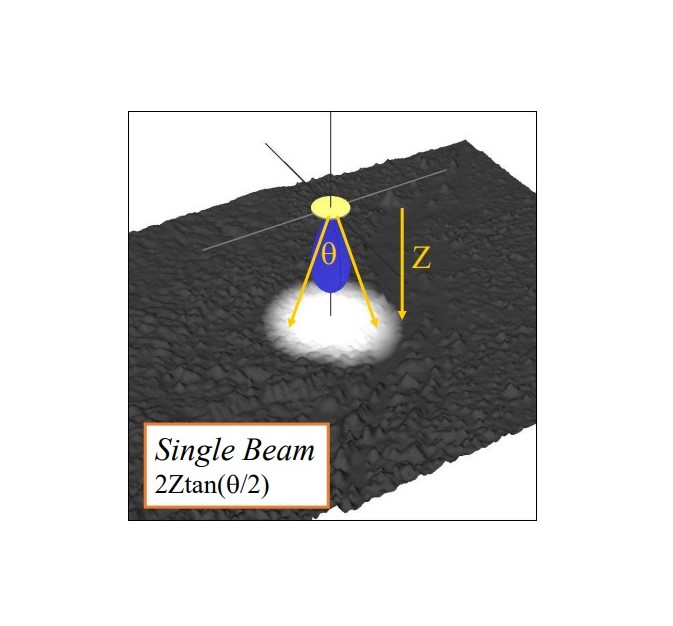
- Teacher: Candida Aulia De Silva Nusantara
- Teacher: Danar Guruh Pratomo
- Teacher: Ira Mutiara Anjasmara
- Teacher: Irena Hana Hariyanto
- Teacher: Khomsin
- Teacher: Muhammad Aldila Syariz
- Teacher: Nafisatus Sania Irbah

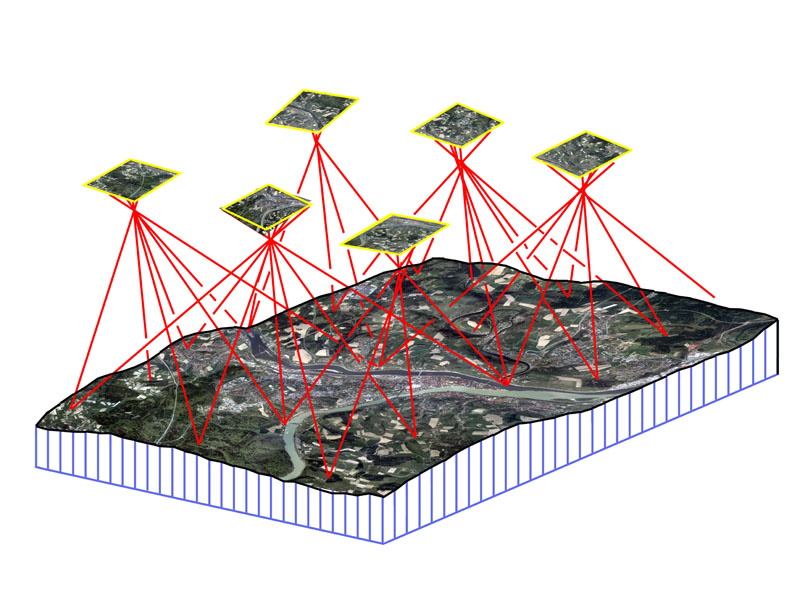
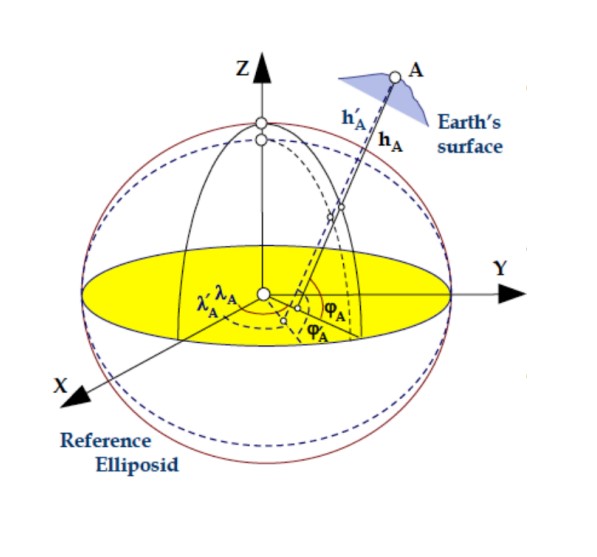
Bahan Kajian :
• Struktur Aljabar
• Grup
• Ring
Capaian Mata Kuliah :
1. Mahasiswa mampu mengikuti perkembangan, mengembangkan dan menerapkan matematika serta mampu berkomunikasi secara aktif dan benar baik lisan ataupun tulisan
2. Mahasiswa mampu menjelaskan prinsip-prinsip dasar dan lanjut dari teori yang dipahaminya khususnya berkaitan dengan struktur dari suatu lapangan berhingga dan mampu melakukan komputasi simbolik
3. Mahasiswa mampu menjelaskan secara cerdas dan kreatif tentang peranan signifikan aplikasi Aljabar dalam bidang rumpun pengetahuan terkait dan bidang lainnya
4. Mahasiswa mampu menyajikan pemahaman ilmunya dalam bidang Aljabar
secara mandiri ataupun dalam kerja tim
Pustaka Utama :
1. Subiono., ”Catatan Kuliah : ALJABAR II”, Jurusan Matematika FMIPA-ITS, 2014.
2. Joseph A. Gallian, ”Contemporary Abstract Algebra, 7th Edition”, Brooks/Cole, (2010)
3. Joseph J. Rotman,”Advanced Modern Algebra”, Prentice Hall, (2003).
Pustaka Pendukung :
1. William Paulsen,” Abstract Algebra, An Interactive Approach “, CRC Press, (2010).
2. Robert A. Beezer,” SAGE for Abstract Algebra, A Supplement to Abstract Algebra, Theory and Applications “,
Department of Mathematics and Computer Science, University of Puget Sound, 2013.
The Nusantara Architecture course aims to provide students with the ability to learn architectural and building knowledge, including an understanding of architecture within the context of Indonesian architecture. The course will cover the fundamental features of Nusantara architecture as well as the similarities and differences between regional architectures, highlighting the diversity in archipelago architecture and its comparison to pre-modern Western architecture. Additionally, the course will introduce the distinctions between traditional architecture and archipelago architecture.
This compulsory course aims to enhance students' competence in exploring the principles and theories of the digital design paradigm and its development, technological aspects of digital design, concepts, and techniques of digital design, the role of the designer, and the computational component in practical design. This will be accomplished through a combination of lecture-based instruction, group work, and case study-based learning.
This course introduces the students to the creative approach concept to solve the
problem. The design concept that is human-centered based will be the main theme in this
course. Design thinking is a method for a creative implementation to produce a new
solution for a complex problem. In this course, the students will learn in iterative of
solving the problem from ideas and experimentations by using the design techniques to
capture the insight and generate the innovative solution for every challenge in the
organization, business, as well as public service. With design thinking, you are certainly
producing the solutions for problems such as business failure, new product or new
venture, solving the social problem such as insufficient health facility, and improving the
service quality. The course is using problem-based learning where the class session is
minimum. Students are required to implement the knowledge they acquired in the real
case.
Description
Big Data Analytics deals with techniques of data mining, machine learning, and deep learning from computer science, statistics, and mathematics compiled together as an interdisciplinary to analyse the ever growing large data (due to volume, velocity and variety) as problems faced by industry today. Through this course, students are expected to have a deep and systematic knowledge of business and technical strategies for data analytics and the subsequent skills to implement solutions in the workplace.
Learning Outcomes
Students are able to:
· Develop knowledge and analytical skills in current and developing areas of statistical analysis and machine learning.
· Students enable to identify, develop, and apply detailed analytical, creative, and problem-solving skills.
· Communicate computer science concepts, designs, and solutions effectively and professionally in any organization.
· Students exhibit the good awareness of technologies relevant to the fast growing large data in the workplace
· Embark on Big Data Analytics careers which is one of the fastest growing technologies.
Mata kuliah Biologi mempelajari kehidupan sebagai ilmu pengetahuan, dimulai dengan konsep dasar kehidupan dari tingkat sel sampai ekosistem; keanekaragaman makhluk hidup dan interaksinya dengan lingkungan. Proses pembelajaran melalui kegiatan belajar mengajar di kelas, tugas dan diskusi, studi kasus. Untuk mengetahui CPMK yang telah didapatkan oleh mahasiswa, dilakukan evaluasi
Biology courses study life as a science, starting with the basic concepts of life from cells to individuals; and the diversity of biota and their interactions with the environment. The learning process through teaching and learning activities, case studies, assignments, discussions, and evaluations
Mata kuliah yang mempelajari dan mempraktikkan ketrampilan mewujudkan desain berbasis pada perangkat lunak komputer. Menggunakan perangkat lunak parametrik dan metode workflow untuk tujuan simulasi bentuk, analisis, presentasi dan perencanaan proses manufaktur.
Courses that learn and practice the skills of realizing design based on computer software. Using parametric software and workflow methods for simulation, analysis, presentation and manufacturing process planning
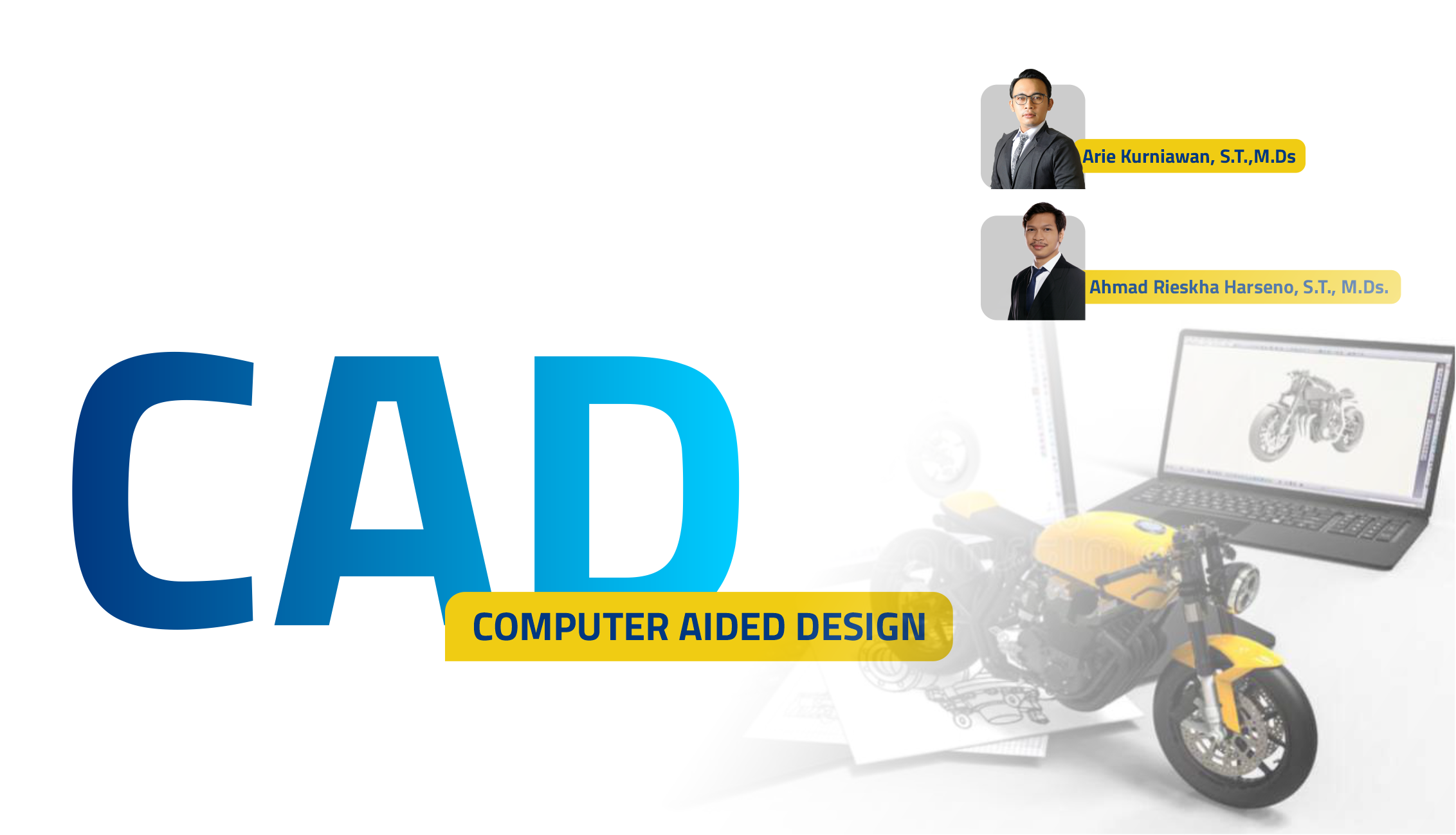
|
Course Description |
: |
Basic Architecture Design 1 aims to give students the ability to train design thinking sensitivity and creative thinking, understand the basic elements and principles of design, and represent ideas by applying the basic principles of architectural communication. |
|
|
|
|
|
Course Learning Outcome |
: |
1. Capable to develop architectural 3 dimensional thinking through experiencing, model and drawing, and working on it individually and collectively. 2. Capable to apply comprehensive architectural representation in the drawing, pin-up, and model output, and working on it individually and collectively. 3. Capable to develop creative and imaginative thinking, individually and collectively. |
|
|
|
|
|
Topic |
: |
1. Primary element in architecture 2. Identification of primary element in architecture 3. Think 3D 4. Identification of 1D, 2D, 3D 5. Architectural Communication 6. Diagram and Sketch 7. 2D and 3D drawing 8. Technical drawing 9. Architectural drawing 10. Creative method 11. Brainstorming 12. Synectic 13. Transformation 14. Morphological chart |
Data Mining Statistics is one of the expertise courses that are part of the field of study in the computational statistics course group. The purpose of the Data Mining course is that students are able to dig, summarize and analyze the information contained in a large data using methods based on computational statistics. Through this course, it is hoped that students will have a learning experience to think critically and be able to make the right decisions about Data Mining techniques that are appropriate for a problem and its solution and be able to communicate both orally and in writing. The learning strategy used is discussion and exercises and assignments .
Mata kuliah Desain Penelitian Doktor ini dirancang untuk membekali mahasiswa dengan kemampuan merancang dan melaksanakan penelitian doktoral yang inovatif, orisinal, dan berdampak signifikan dalam bidang geodesi, surveying, hidrografi, penginderaan jauh, fotogrametri, sistem informasi geografis, dan kadaster. Mata kuliah ini menekankan pada pengembangan sikap dan karakter profesional, kemampuan mengembangkan teori dan memecahkan masalah melalui riset inter-, multi-, dan transdisipliner, serta kemampuan mengelola pembelajaran diri dan mengembangkan diri sebagai pembelajar sepanjang hayat.
Capaian Pembelajaran Lulusan
Capaian Pembelajaran Mata Kuliah
Desain Pengalaman Pengguna (User Experience Design) adalah bidang yang berfokus pada mengoptimalkan interaksi antara pengguna dan produk atau layanan. Tujuannya adalah menciptakan pengalaman yang memuaskan, efisien, dan efektif bagi pengguna. Dalam mata kuliah ini, mahasiswa akan mempelajari prinsip-prinsip Interaksi Manusia dan Komputer (Human-Computer Interaction) serta melakukan evaluasi ketergunaan (Usability) perangkat lunak dan melaporkannya. Mata kuliah ini melibatkan lintas disiplin ilmu, termasuk psikologi, ergonomi, antropologi, ilmu komputer, desain grafis, dan produk. Mahasiswa diharapkan dapat mengaplikasikan pengetahuan ini dalam pembuatan perangkat lunak yang tidak hanya beroperasi, tetapi juga mudah digunakan dan disesuaikan dengan kebutuhan pengguna.
User Experience Design focuses on optimizing interactions between users and products or services. Its goal is to create satisfying, efficient, and effective experiences for users. In this course, students will learn the principles of Human-Computer Interaction and conduct usability evaluations of software, reporting their findings. The course spans multiple disciplines, including psychology, ergonomics, anthropology, computer science, graphic design, and product design. Students are expected to apply this knowledge to create software that is not only functional but also user-friendly and tailored to user needs. 🌟🚀🎨📱📊

Desain Pengalaman Pengguna (User Experience Design) adalah bidang yang berfokus pada mengoptimalkan interaksi antara pengguna dan produk atau layanan. Tujuannya adalah menciptakan pengalaman yang memuaskan, efisien, dan efektif bagi pengguna. Dalam mata kuliah ini, mahasiswa akan mempelajari prinsip-prinsip Interaksi Manusia dan Komputer (Human-Computer Interaction) serta melakukan evaluasi ketergunaan (Usability) perangkat lunak dan melaporkannya. Mata kuliah ini melibatkan lintas disiplin ilmu, termasuk psikologi, ergonomi, antropologi, ilmu komputer, desain grafis, dan produk. Mahasiswa diharapkan dapat mengaplikasikan pengetahuan ini dalam pembuatan perangkat lunak yang tidak hanya beroperasi, tetapi juga mudah digunakan dan disesuaikan dengan kebutuhan pengguna.
User Experience Design focuses on optimizing interactions between users and products or services. Its goal is to create satisfying, efficient, and effective experiences for users. In this course, students will learn the principles of Human-Computer Interaction and conduct usability evaluations of software, reporting their findings. The course spans multiple disciplines, including psychology, ergonomics, anthropology, computer science, graphic design, and product design. Students are expected to apply this knowledge to create software that is not only functional but also user-friendly and tailored to user needs. 🌟🚀🎨📱📊

User Experience Design focuses on
optimizing interactions between users and products or services. Its
goal is to create satisfying, efficient, and effective user experiences.
In this course, students will learn the principles of Human-Computer
Interaction and conduct usability evaluations of software, reporting
their findings. The course spans multiple disciplines, including
psychology, ergonomics, anthropology, computer science, graphic design,
and product design. Students are expected to apply this knowledge to
create software that is not only functional but also user-friendly and
tailored to user needs.

| CPL 4 | Mampu menerapkan konsep struktur, sifat dan perubahan zat berdasarkan aspek dinamika dan energetika Able to apply the concepts of structure, properties and changes in substances based on aspects of dynamics and energetics | |
| CPL 5 | Mampu menerapkan konsep, teori dan metode tentang analisis dan sintesis zat-zat kimia Able to apply concepts, theories and methods regarding the analysis and synthesis of chemical substances | |
| CPL 6 | Mampu mengaplikasikan pola pikir kimia dan memanfaatkan IPTEK pada bidangnya dalam menyelesaikan masalah yang dihadapi Able to apply chemical thinking and utilize science and technology in their field to solve the problems |
This course studies the mechanical design of the machine and its elements, which include joint elements, power/rotation transmission elements, couplings, and springs, under the static-dynamic loads. Students also learn about the static-dynamic failure analysis on a machine element, formulate the problems, and determine the material that is able to support the load acting on the machine element.

Occupational Safety and Health (OSH) is an important topic in both manufacturing and service industries. The effort to create a safe, comfortable and healthy workplace needs to be prioritized and is currently mandatory for the Government. Not only from the security side of company property, but more than that, the main thing is from the human side.
The Ergo Safety course provides an understanding of the importance of safety and ergonomics aspects, and how to identify existing hazards. Furthermore, students are expected to be able to assess and take precautions against potential hazards in order to minimize the chance of accidents and minimize losses due to accidents. This course also describes the safety relationship in industry 4.0.
DESKRIPSI MATA KULIAH FISIKA I
CAPAIAN PEMBELAJARAN
|
CP MK-1 |
Mampu menjelaskan dan menggunakan besaran, satuan, dan vektor, serta mampu menerapkan operasi matematika pada vektor secara geometris dan analitis untuk menyelesaikan permasalahan vektor. |
|
CP MK-2 |
Mampu mendefinisikan Pergeseran posisi, kecepatan, percepatan gerak lurus dan melengkung secara grafis dan matematis serta mendemontrasikannya (P). |
|
CP MK-3 |
Mampu menggunakan konsep dan teori pergeseran posisi, kecepatan, percepatan gerak lurus dan melengkung serta mendemontrasikannya (M-4) |
|
CP MK-4 |
Mahasiswa mampu menerapkan azas impuls dan momentum, kekekalan momentum, proses tumbukan kedalam penyelesaian soal |
|
CP MK-5 |
Memahami prinsip gerak benda tegar dan gerak menggelinding dan mampu menerapkan dalam penyelesaian soal |
|
CP MK-6 |
Mahasiswa memahami getaran harmonik, hukum Hooke pada elastisitas tarik dan puntir |
|
CP MK-7 |
Mahasiswa memahami peristiwa aliran fluida statisioner dan peranan viskositas pada aliran fluida. |
|
CP MK-8 |
Mahasiswa mampu merumuskan masalah melalui analisis berdasarkan hasil eksperimen |
MATERI
|
Besaran dan vektor: Besaran dasar, besaran turunan, satuan, konversi satuan, besaran skalar dan vektor, operasi matematika pada vektor secara geometris dan analitis Kinematika partikel: Pergeseran posisi, kecepatan, percepatan, gerak lurus, gerak lengkung (parabola dan melingkar); gerak relatif. Dinamika partikel: Hukum Newton I, II dan III, macam-macam gaya (gaya gravitasi, gaya berat, gaya tegang tali, gaya normal, gaya gesek dan gaya pegas), kesetimbangan gaya, penerapan hukum Newton I, II dan III ; Kerja dan energi: konsep kerja, energi kinetik, energi potensial (gravitasi dan pegas), teorema kerja energi, hukum kekekalan energi mekanik, Impuls dan Momentum: impuls, momentum, tumbukan (elastis dan tidak elastis),; Dinamika rotasi: Pergeseran sudut, kecepatan sudut dan percepatan sudut, momen gaya (torsi), pusat massa, kesetimbangan momen gaya, momen inersia, energi kinetik rotasi, gerak menggelinding, hukum kekekalan energi (translasi dan rotasi) Getaran: gerak harmonis sederhana, energi gerak harmonis sederhana, bandul matematis, bandul fisis, bandul puntir, gabungan getaran selaras ( sejajar dan tegak lurus); Mekanika fluida: tekanan hidrostatika, prinsip Pascal, prinsip Archimedes, tegangan permukaan, persamaan kontinuitas, persamaan Bernoulli, viskositas. |
REFERENSI
|
Utama: |
|
|
1. Sears & Zemanky,"University Physics", Pearson Education, 14thed, USA, 2016 2. Douglas C. Giancoli, 'Physics for Scientists and Engineers, Pearson Education, 4th ed, London, 2014 3. Tim Dosen, " Fisika I", Fisika FMIPA-ITS 4. "Petunjuk Praktikum Fisika Dasar", Fisika, MIPA-ITS |
|
|
Pendukung: |
|
|
5. Halliday, Resnic, Jearl Walker; 'Fundamental of Physics'. John Wiley and Sons, 10th ed, New York, 2014 6. Tipler, PA, 'Physics for Scientists and Engineers ‘,6th ed, W.H. Freeman and Co, New York, 2008 | |
DESKRIPSI MATA KULIAH FISIKA I
CAPAIAN PEMBELAJARAN
|
CP MK-1 |
Mampu menjelaskan dan menggunakan besaran, satuan, dan vektor, serta mampu menerapkan operasi matematika pada vektor secara geometris dan analitis untuk menyelesaikan permasalahan vektor. |
|
CP MK-2 |
Mampu mendefinisikan Pergeseran posisi, kecepatan, percepatan gerak lurus dan melengkung secara grafis dan matematis serta mendemontrasikannya (P). |
|
CP MK-3 |
Mampu menggunakan konsep dan teori pergeseran posisi, kecepatan, percepatan gerak lurus dan melengkung serta mendemontrasikannya (M-4) |
|
CP MK-4 |
Mahasiswa mampu menerapkan azas impuls dan momentum, kekekalan momentum, proses tumbukan kedalam penyelesaian soal |
|
CP MK-5 |
Memahami prinsip gerak benda tegar dan gerak menggelinding dan mampu menerapkan dalam penyelesaian soal |
|
CP MK-6 |
Mahasiswa memahami getaran harmonik, hukum Hooke pada elastisitas tarik dan puntir |
|
CP MK-7 |
Mahasiswa memahami peristiwa aliran fluida statisioner dan peranan viskositas pada aliran fluida. |
|
CP MK-8 |
Mahasiswa mampu merumuskan masalah melalui analisis berdasarkan hasil eksperimen |
MATERI
|
Besaran dan vektor: Besaran dasar, besaran turunan, satuan, konversi satuan, besaran skalar dan vektor, operasi matematika pada vektor secara geometris dan analitis Kinematika partikel: Pergeseran posisi, kecepatan, percepatan, gerak lurus, gerak lengkung (parabola dan melingkar); gerak relatif. Dinamika partikel: Hukum Newton I, II dan III, macam-macam gaya (gaya gravitasi, gaya berat, gaya tegang tali, gaya normal, gaya gesek dan gaya pegas), kesetimbangan gaya, penerapan hukum Newton I,II dan III ; Kerja dan energi: konsep kerja, energi kinetik, energi potensial (gravitasi dan pegas), teorema kerja energi, hukum kekekalan energi mekanik, Impuls dan Momentum: impuls, momentum, tumbukan (elastis dan tidak elastis),; Dinamika rotasi: Pergeseran sudut, kecepatan sudut dan percepatan sudut, momen gaya (torsi), pusat massa, kesetimbangan momen gaya, momen inersia, energi kinetik rotasi, gerak menggelinding, hukum kekekalan energi (translasi dan rotasi) Getaran: gerak harmonis sederhana, energi gerak harmonis sederhana, bandul matematis, bandul fisis, bandul puntir, gabungan getaran selaras ( sejajar dan tegak lurus); Mekanika fluida: tekanan hidrostatika, prinsip Pascal, prinsip Archimedes, tegangan permukaan, persamaan kontinuitas, persamaan Bernoulli, viskositas. |
REFERENSI
|
Utama: |
|
|
1. Sears & Zemanky,"University Physics", Pearson Education, 14thed, USA, 2016 2. Douglas C. Giancoli, 'Physics for Scientists and Engineers, Pearson Education, 4th ed, London, 2014 3. Tim Dosen, " Fisika I", Fisika FMIPA-ITS 4. "Petunjuk Praktikum Fisika Dasar", Fisika, MIPA-ITS |
|
|
Pendukung: |
|
|
5. Halliday, Resnic, Jearl Walker; 'Fundamental of Physics'. John Wiley and Sons, 10th ed, New York, 2014 6. Tipler, PA, 'Physics for Scientists and Engineers ‘,6th ed, W.H. Freeman and Co, New York, 2008 |
|
|
COURSE DESCRIPTION |
PROGRAMME LEARNING OUTCOME (PLO) OF THE COURSE
able to apply the theoretical concepts of classical
physics and modern physics in depth through identification of the physical
properties of a physical system. [P]
LEARNING OUTCOME OF THE COURSE
·
Students understand the
substances that construct the material, as well as the electrical properties,
the nature of the conductor and the dielectric ·
Students understand the
electric field strength based on the style of coulomb and Gauss’ law. ·
Students understand
various forms of electric potentials on charged
conductors ·
Students understand the
capacitance principles of various capcitor forms in capacitor circuits, series,
parallel, and mixed circuits. ·
Students are able to
use magnetic field force formulas with electric currents and moving charge ·
Students can mention
the role of magnetization in magnetic materials and hystensis loops ·
Students understand the
principles of electrostatic force, and current in resistors, capacitors, and
inductors
Mata kuliah Fisika Gelombang merupakan mata kuliah basic science yang ada di Departemen Teknik Geomatika. Setelah mengikuti mata kuliah ini, mahasiswa diharapkan memiliki kemampuan dalam mendeskripsikan gelombang dalam berbagai medium serta sifat-sifat umum gelombang dan gangguannya. Selain itu, mahasiswa akan mendapatkan materi mengenai penggunaan berbagai jenis gelombang dalam aplikasinya di bidang geomatika. Dalam pembelajaran akan diberikan perkuliahan dan evaluasi dengan metode student center learning.
Capaian Pembelajaran Lulusan yang didukung oleh Mata Kuliah ini adalah:
Capaian Pembelajaran Mata Kuliah yang dicapai oleh Mata Kuliah ini adalah :
Bahan Kajian :
Bobot Penilaian dari Mata Kuliah ini adalah:
Mata kuliah Grafika Komputer membahas tentang berbagai metode dan teknik yang digunakan untuk memanipulasi data agar dapat divisualisasikan pada perangkat output komputer seperti monitor. Mahasiswa akan mempelajari konsep dasar grafika komputer, termasuk pipeline grafis, pemodelan objek 2D dan 3D, serta penggunaan pustaka grafika modern seperti WebGL dan Three.js. Selain itu, mata kuliah ini juga mencakup pengenalan dasar-dasar penggunaan game engine seperti Unity3D untuk pengembangan aplikasi berbasis grafika yang interaktif. Melalui proyek individu dan kelompok, mahasiswa diharapkan mampu mengembangkan aplikasi grafika komputer yang inovatif dan efektif.
The Computer Graphics course covers various methods and techniques used to manipulate data for visualization on computer output devices such as monitors. Students will learn the fundamental concepts of computer graphics, including the graphics pipeline, 2D and 3D object modeling, and the use of modern graphics libraries such as WebGL and Three.js. Additionally, the course introduces basic usage of game engines like Unity3D for developing interactive graphics-based applications. Through individual and group projects, students are expected to develop innovative and effective computer graphics applications.
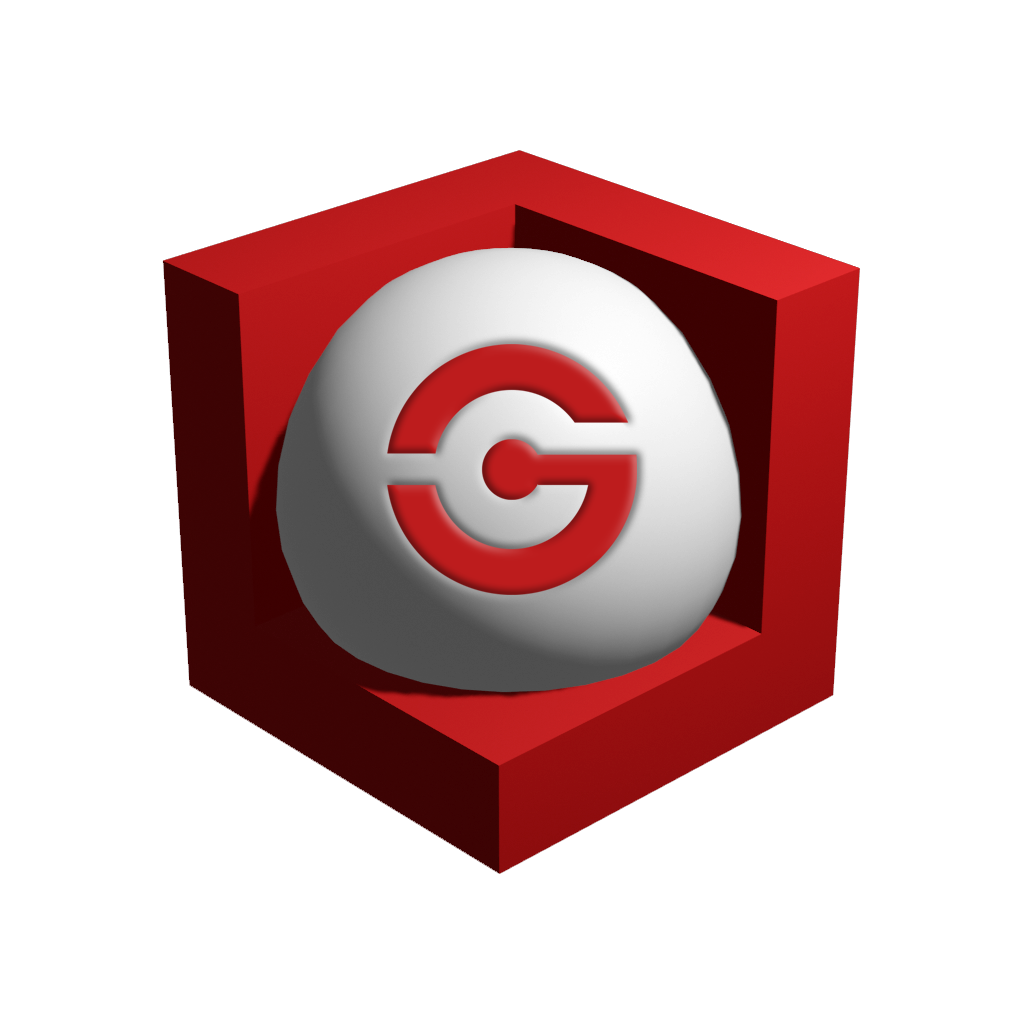
Melalui kuliah ini, para mahasiswa diajarkan berbagai materi dan latihan, sehingga mereka mampu mendesain objek-objek tertentu sesuai dengan permintaan pengguna di dunia nyata dan membuat program grafika interaktif menggunakan pustaka grafika seperti WebGL dan Three.js. Through this course, students are taught various materials and practices, so that they can design certain objects according to user's needs in the real world and create interactive graphics programs respectively using graphics libraries, e.g. WebGL and Three.js.
Ada dua buku referensi utama yang digunakan di kuliah ini: Interactive Computer Graphics A Top-Down Approach with WebGL (2014) oleh Edward Angel and Dave Shreiner; DAN Learning Three.js: Programming 3D Animations and Visualizations for The Web with HTML5 and WebGL (2018) oleh Jos Dirksen. There are two main book references used in this course: Interactive Computer Graphics A Top-Down Approach with WebGL (2014) by Edward Angel and Dave Shreiner; AND Learning Three.js: Programming 3D Animations and Visualizations for The Web with HTML5 and WebGL (2018) by Jos Dirksen.

Melalui kuliah ini, para mahasiswa diajarkan berbagai materi dan latihan, sehingga mereka mampu mendesain objek-objek tertentu sesuai dengan permintaan pengguna di dunia nyata dan membuat program grafika interaktif menggunakan pustaka grafika seperti WebGL dan Three.js. Through this course, students are taught various materials and practices, so that they can design certain objects according to user's needs in the real world and create interactive graphics programs respectively using graphics libraries, e.g. WebGL and Three.js.
Ada dua buku referensi utama yang digunakan di kuliah ini: Interactive Computer Graphics A Top-Down Approach with WebGL (2014) oleh Edward Angel and Dave Shreiner; DAN Learning Three.js: Programming 3D Animations and Visualizations for The Web with HTML5 and WebGL (2018) oleh Jos Dirksen. There are two main book references used in this course: Interactive Computer Graphics A Top-Down Approach with WebGL (2014) by Edward Angel and Dave Shreiner; AND Learning Three.js: Programming 3D Animations and Visualizations for The Web with HTML5 and WebGL (2018) by Jos Dirksen.

Human reliability is to find credible ways of helping designers, management, operators, and authorities to be able to help increase the safety and profitability of technological systems. Human reliability coupled with probabilistic risk/safety assessment introduces people to a thought process to perceive risks in operation and help define ways in which the risk can be reduced. During the course, participants will acquire the theory and practical application of human reliability. Several methods will be studied in order to predict, anticipate, and investigate the possibility of human error in the various areas of work.
Mata kuliah mengulas industri pelayaran global, evolusi rancangan kapal, tantangan keberlanjutan, pengelolaan biaya, dan kerangka hukum. Mata kuliah ini memberikan wawasan tentang teknologi dan rancangan kapal terkini, upaya ramah lingkungan, strategi pengelolaan biaya, dan peraturan keselamatan, lingkungan, dan operasional.
The course covers the global shipping industry, the evolution of ship design, sustainability challenges, cost management, and the legal framework. It provides insights into the latest technology and ship design, eco-friendly initiatives, cost management strategies, and regulations on safety, environment, and operations.
Wijnolst, Niko, Tor Wergeland, and Kai Levander. Shipping innovation. IOS Press, 2009.
Support References:
1. Papanikolaou, A. (2014). Ship design: methodologies of preliminary design. Springer.
2. Schneekluth, Herbert, and Volker Bertram. Ship design for efficiency and economy. Vol. 218. Oxford: Butterworth-Heinemann, 1998.
3. Watson, David GM. Practical ship design. Vol. 1. Elsevier, 2002.
Sho
|
|
INSTITUT TEKNOLOGI SEPULUH
NOPEMBER |
Kode Dokumen |
|||||||||||||||||||||||||||||||||||||||||||||||
|
RENCANA PEMBELAJARAN SEMESTER |
|||||||||||||||||||||||||||||||||||||||||||||||||
|
MATA KULIAH (MK) |
KODE |
Rumpun MK |
BOBOT (sks) |
SEMESTER |
Tgl Penyusunan |
||||||||||||||||||||||||||||||||||||||||||||
|
INSTRUMENTASI SISTEM KONTROL (CONTROL SYSTEM INSTRUMENTATION) |
EE234503 |
Teknik Kontrol dan Otomasi |
T=3 |
P=0 |
5(wajib) |
25 Nov 2022 |
|||||||||||||||||||||||||||||||||||||||||||
|
OTORISASI |
Pengembang RPS |
Koordinator RMK |
Ketua PRODI |
||||||||||||||||||||||||||||||||||||||||||||||
|
Eka Iskandar |
Ari Santoso |
Dimas Anton Asfani |
|||||||||||||||||||||||||||||||||||||||||||||||
|
Capaian Pembelajaran (CP) |
CPL-PRODI yang dibebankan pada MK |
|
|||||||||||||||||||||||||||||||||||||||||||||||
|
CPL-5 |
Mampu mendesain komponen, sistem, dan proses yang logis dan realistis sesuai dengan spesifikasi yang ditentukan dengan mempertimbangkan aspek keselamatan, sosial, budaya, lingkungan, dan ekonomi |
||||||||||||||||||||||||||||||||||||||||||||||||
|
CPL-6 |
Mampu mengidentifikasi, memformulasikan dan menyelesaikan permasalahan di bidang teknik elektro |
||||||||||||||||||||||||||||||||||||||||||||||||
|
CPL-7 |
Mampu mengetahui dan mengaplikasi metode, keahlian sesuai perkembangan terkini di bidang ilmu pengetahuan dan teknologi untuk menyelesaikan permasalahan teknik elektro dengan mengedepankan nilai-nilai universal |
||||||||||||||||||||||||||||||||||||||||||||||||
|
Capaian Pembelajaran Mata Kuliah (CPMK) |
|
||||||||||||||||||||||||||||||||||||||||||||||||
|
CPMK-1 |
Mampu merancang sistem kontrol beserta instrumentasi yang diperlukan sehingga objektif kontrol terpenuhi Able to design the control system along with the necessary instrumentation so that control objectives are met |
||||||||||||||||||||||||||||||||||||||||||||||||
|
CPMK-2 |
Mampu membuat diagram sistem kontrol dalam diagram fisik, blok dan instrumentasi (P&ID) Able to create system arrangement diagrams in physical, block and instrumentation (P&ID) diagrams |
||||||||||||||||||||||||||||||||||||||||||||||||
|
CPMK-3 |
Mampu mengidentifikasi dan merancang kebutuhan sensor dan aktuator pada suatu sistem kontrol proses Able to identify and design the need for sensors and actuators in a process control system |
||||||||||||||||||||||||||||||||||||||||||||||||
|
CPMK-4 |
Mampu mensimulasikan sistem instrumentasi untuk kontrol proses Able to simulate instrumentation systems for process control |
||||||||||||||||||||||||||||||||||||||||||||||||
|
|
|
Matrik CPL – CPMK
|
|||||||||||||||||||||||||||||||||||||||||||||||
|
Deskripsi Singkat MK |
Mata kuliah ini membahas tentang konsep penerapan sistem instrumentasi terkait pengukuran, variabel proses, transduser, pemilihan sensor, karakteristik dalam pengaplikasian berbagai macam sensor (mekanik, optik, thermal, lainnya), rangkaian pengkondisi sinyal konverter.
This course discusses the concept of implementing an instrumentation system related to measurement, process variables, transducers, sensor selection, characteristics in the application of various sensors (mechanical, optical, thermal, etc.), signal converter conditioning circuits. |
||||||||||||||||||||||||||||||||||||||||||||||||
|
Bahan Kajian: Materi Pembelajaran |
• Pengenalan Sistem Instrumentasi (Introduction to Instrumentation System) • Pengenalan Sistem Kontrol Proses (Introduction to Process Control System) • Piping and Instrumentation Diagram (P&ID) (Piping and Instrumentation Diagram (P&ID)) • Analog Signal Conditioning (Analog Signal Conditioning) • Digital Signal Conditioning (Digital Signal Conditioning) • Jenis-jenis sensor (Types of Sensors) • Transmisi dan Komunikasi (Transmission and Communication) • Kontrol Otomatis (Automatic Control) • Jenis-jenis Aktuator (Types of Actuators) • Element kontrol Akhir (Final Control Element) |
||||||||||||||||||||||||||||||||||||||||||||||||
|
Pustaka |
Utama : |
|
|||||||||||||||||||||||||||||||||||||||||||||||
|
1. Curtis D. Jonhson., “Process control instrumentation technology,” 7th edition, PHI, New Jersey, 1989 |
|||||||||||||||||||||||||||||||||||||||||||||||||
|
Pendukung : |
|
||||||||||||||||||||||||||||||||||||||||||||||||
|
1. Wolfgang Altmann, “Practical Process Control for Engineers and Technicians,” John Elsevier, 2005 2. W.L. Luyben, “Process Modeling, Simulation and Control for Chemical Engineers,” McGraw Hill, 2nd edition, 1990 3. Karl J. Astrom, and Bjorn Wittenmark, “Computer-controlled systems: theory and design,” 3rd edition, PHI, New Jersey, 1997 |
|||||||||||||||||||||||||||||||||||||||||||||||||
|
Dosen Pengampu |
Eka Iskandar, Abdul Hady, Trihastuti Agustinah
|
||||||||||||||||||||||||||||||||||||||||||||||||
|
Matakuliah Syarat |
|
||||||||||||||||||||||||||||||||||||||||||||||||
|
Mg Ke- |
Kemampuan akhir tiap tahapan belajar (Sub-CPMK) |
Penilaian |
Bantuk Pembelajaran, Metode Pembelajaran, Penugasan Mahasiswa, [ Estimasi Waktu] |
Materi Pembelajaran [ Pustaka ] |
Bobot Penilaian (%) |
||||||||||||||||||||||||||||||||||||||||||||
|
Indikator |
Kriteria & Bentuk |
Luring (offline) |
Daring (online) |
||||||||||||||||||||||||||||||||||||||||||||||
|
(1) |
(2) |
(3) |
(4) |
(5) |
(6) |
(7) |
(8) |
||||||||||||||||||||||||||||||||||||||||||
|
1 |
Mengenalkan Sistem Instrumentasi (Introduction to Instrumentation System) |
Ketepatan Mengenalkan Sistem Instrumentasi (Introduction to Instrumentation System) |
Tugas |
Pembelajaran dalam kelas (1x3x50 menit) Belajar mandiri (1x3x60 menit) Belajar terstruktur (1x3x60 menit) |
|
5% |
|||||||||||||||||||||||||||||||||||||||||||
|
2 |
Mengenalkan Sistem Kontrol Proses (Introduction to Process Control System) |
Ketepatan Mengenalkan Sistem Kontrol Proses (Introduction to Process Control System) |
Tugas |
Pembelajaran dalam kelas (2x3x50 menit) Belajar mandiri (2x3x60 menit) Belajar terstruktur (2x3x60 menit) |
|
5% |
|||||||||||||||||||||||||||||||||||||||||||
|
3 |
Menjelaskan Piping and Instrumentation Diagram (P&ID) (Piping and Instrumentation Diagram (P&ID)) |
Ketepatan Menjelaskan Piping and Instrumentation Diagram (P&ID) (Piping and Instrumentation Diagram (P&ID)) |
Tugas |
Pembelajaran dalam kelas (2x3x50 menit) Belajar mandiri (2x3x60 menit) Belajar terstruktur (2x3x60 menit) |
|
5% |
|||||||||||||||||||||||||||||||||||||||||||
|
4 |
Menjelaskan Analog Signal Conditioning (Analog Signal Conditioning) |
Ketepatan Menjelaskan Analog Signal Conditioning (Analog Signal Conditioning) |
Tugas |
Pembelajaran dalam kelas (1x3x50 menit) Belajar mandiri (1x3x60 menit) Belajar terstruktur (1x3x60 menit) |
|
5% |
|||||||||||||||||||||||||||||||||||||||||||
|
5 |
Menjelaskan Digital Signal Conditioning (Digital Signal Conditioning) |
Ketepatan Menjelaskan Digital Signal Conditioning (Digital Signal Conditioning) |
Tugas |
Pembelajaran dalam kelas (1x3x50 menit) Belajar mandiri (1x3x60 menit) Belajar terstruktur (1x3x60 menit) |
|
5% |
|||||||||||||||||||||||||||||||||||||||||||
|
6 |
Menjelaskan Jenis-jenis sensor Suhu (Types of Temperature Sensors) |
Ketepatan Menjelaskan Jenis-jenis sensor Suhu (Types of Temperature Sensors) |
Tugas |
Pembelajaran dalam kelas (1x3x50 menit) Belajar mandiri (1x3x60 menit) Belajar terstruktur (1x3x60 menit) |
|
5% |
|||||||||||||||||||||||||||||||||||||||||||
|
7 |
Menjelaskan Jenis-jenis sensor Tekanan (Types of Pressure Sensors) |
Ketepatan Menjelaskan Jenis-jenis sensor Tekanan (Types of Pressure Sensors) |
Tugas |
Pembelajaran dalam kelas (2x3x50 menit) Belajar mandiri (2x3x60 menit) Belajar terstruktur (2x3x60 menit) |
|
5% |
|||||||||||||||||||||||||||||||||||||||||||
|
8 |
Evaluasi Tengah Semester / Ujian Tengah Semester |
|
|||||||||||||||||||||||||||||||||||||||||||||||
|
9 |
Menjelaskan Jenis-jenis sensor Level (Types of Level Sensors) |
Ketepatan Menjelaskan Jenis-jenis sensor Level (Types of Level Sensors) |
Tugas |
Pembelajaran dalam kelas (2x3x50 menit) Belajar mandiri (2x3x60 menit) Belajar terstruktur (2x3x60 menit) |
|
10% |
|||||||||||||||||||||||||||||||||||||||||||
|
10 |
Menjelaskan Jenis-jenis sensor Flow (Types of Flow Sensors) |
Ketepatan Menjelaskan Jenis-jenis sensor Flow (Types of Flow Sensors) |
Tugas |
Pembelajaran dalam kelas (2x3x50 menit) Belajar mandiri (2x3x60 menit) Belajar terstruktur (2x3x60 menit) |
|
10% |
|||||||||||||||||||||||||||||||||||||||||||
|
11 |
Menjelaskan Jenis-jenis sensor Posisi (Types of Position Sensors) |
Ketepatan Menjelaskan Jenis-jenis sensor Posisi (Types of Position Sensors) |
Tugas |
Pembelajaran dalam kelas (2x3x50 menit) Belajar mandiri (2x3x60 menit) Belajar terstruktur (2x2x60 menit) |
|
10% |
|||||||||||||||||||||||||||||||||||||||||||
|
12 |
Menjelaskan Transmisi dan Komunikasi (Transmission and Communication) |
Ketepatan Menjelaskan Transmisi dan Komunikasi (Transmission and Communication) |
Tugas |
Pembelajaran dalam kelas (2x3x50 menit) Belajar mandiri (2x3x60 menit) Belajar terstruktur (2x3x60 menit) |
|
10% |
|||||||||||||||||||||||||||||||||||||||||||
|
13 |
Menjelaskan Kontrol Otomatis (Automatic Control) |
Ketepatan Menjelaskan Kontrol Otomatis (Automatic Control) |
Tugas |
Pembelajaran dalam kelas (2x3x50 menit) Belajar mandiri (2x3x60 menit) Belajar terstruktur (2x3x60 menit) |
|
10% |
|||||||||||||||||||||||||||||||||||||||||||
|
14 |
Menjelaskan Jenis-jenis Aktuator (Types of Actuators) |
Ketepatan Menjelaskan Jenis-jenis Aktuator (Types of Actuators) |
Tugas |
Pembelajaran dalam kelas (2x3x50 menit) Belajar mandiri (2x3x60 menit) Belajar terstruktur (2x3x60 menit) |
|
10% |
|||||||||||||||||||||||||||||||||||||||||||
|
15 |
Menjelaskan Element kontrol Akhir (Final Control Element) |
Ketepatan Menjelaskan Element kontrol Akhir (Final Control Element) |
Tugas |
Pembelajaran dalam kelas (2x3x50 menit) Belajar mandiri (2x3x60 menit) Belajar terstruktur (2x3x60 menit) |
|
10% |
|||||||||||||||||||||||||||||||||||||||||||
|
16 |
Evaluasi Akhir Semester / Ujian Akhir Semester |
|
|||||||||||||||||||||||||||||||||||||||||||||||
|
Tabel Rencana Asesmen dan Evaluasi
|
|||||||||||||||||||||||||||||||||||||||||||||||||
 Mata kuliah Interaksi Manusia dan Komputer ini berfokus pada proses desain interaksi antara manusia dengan komputer dan pembangunan antarmuka untuk melakukan interaksi. Interaksi antara manusia dengan komputer berlangsung di dalam antarmuka yang melibatkan perangkat lunak dan perangkat keras. Desain antarmuka berdampak pada daur hidup suatu perangkat lunak. Desain dan implementasi fungsi-fungsi pokok dalam suatu perangkat lunak mempengaruhi antarmuka pengguna. Mata kuliah ini melibatkan beberapa lintas disiplin ilmu seperti psikologi, ergonomi, antropologi, ilmu komputer, desain grafis dan produk. Melalui mata kuliah ini mahasiswa diharapkan mampu menerapkan prinsip-prinsip Interaksi Manusia dan Komputer (Human-Computer Interaction) pada perangkat lunak yang dikembangkan melalui kerangka Pemikiran Desain yang berpusat pada pengguna, dan melaporkan evaluasi ketergunaan dari perangkat lunak tersebut.
Mata kuliah Interaksi Manusia dan Komputer ini berfokus pada proses desain interaksi antara manusia dengan komputer dan pembangunan antarmuka untuk melakukan interaksi. Interaksi antara manusia dengan komputer berlangsung di dalam antarmuka yang melibatkan perangkat lunak dan perangkat keras. Desain antarmuka berdampak pada daur hidup suatu perangkat lunak. Desain dan implementasi fungsi-fungsi pokok dalam suatu perangkat lunak mempengaruhi antarmuka pengguna. Mata kuliah ini melibatkan beberapa lintas disiplin ilmu seperti psikologi, ergonomi, antropologi, ilmu komputer, desain grafis dan produk. Melalui mata kuliah ini mahasiswa diharapkan mampu menerapkan prinsip-prinsip Interaksi Manusia dan Komputer (Human-Computer Interaction) pada perangkat lunak yang dikembangkan melalui kerangka Pemikiran Desain yang berpusat pada pengguna, dan melaporkan evaluasi ketergunaan dari perangkat lunak tersebut.This course focuses on the interaction design process between humans and computers and the development of interfaces for interaction. Interaction between humans and computers involves software and hardware. The interface design has an impact on the cycle of software development. On the other hand, the main functions in software development affect user interfaces. This course incorporates multi-discipline subjects, such as psychology, ergonomics, anthropology, computer science, graphics, and product design. Through this course, students are expected to be able to apply interaction principles in Human-Computer Interaction while developing software through Design Thinking that is user-centered and evaluating its usability.
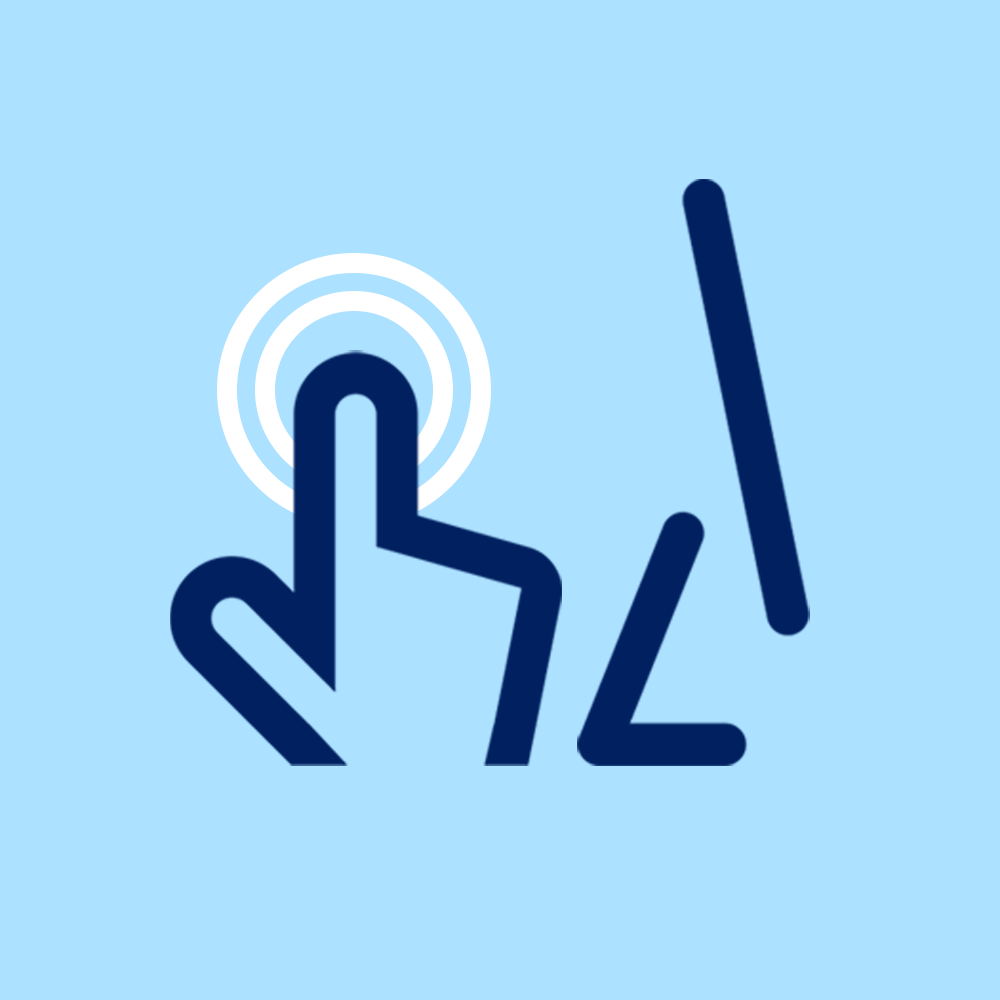

Mata kuliah Interaksi Manusia dan Komputer ini berfokus pada proses desain interaksi antara manusia dengan komputer dan pembangunan antar muka untuk melakukan interaksi. Interaksi antara manusia dengan komputer, berlangsung di dalam antar muka yang melibatkan perangkat lunak dan perangkat keras. Desain antar muka berdampak pada daur hidup suatu perangkat lunak. Desain dan implementasi fungsi-fungsi pokok dalam suatu perangkat lunak mempengaruhi antar muka pengguna. Mata kuliah ini melibatkan beberapa lintas disiplin ilmu seperti: psikologi, ergonomi, antropologi, ilmu komputer, desain grafis dan produk. Melalui mata kuliah ini mahasiswa diharapkan mampu menerapkan prinsip-prinsip Interaksi Manusia dan Komputer (Human-Computer Interaction) pada perangkat lunak yang dikembangkan melalui kerangka Pemikiran Desain yang berpusat pada pengguna, dan melaporkan evaluasi ketergunaan dari perangkat lunak tersebut.
This course focuses on the process of interaction design between human and computer as well as the development of interface for interaction. Interaction between human and computer involves software and hardware. Interface design gives an impact to the cycle of software development. On the other hand, main functions in software development affects user interfaces. This course incorporates multi-discipline subjects, such as psychology, ergonomics, anthropology, computer science, graphic and product designs. Through this course, students are expected to be able to apply interaction principles in Human-Computer Interaction while developing a software through Design Thinking that is user centered and evaluating its usability.
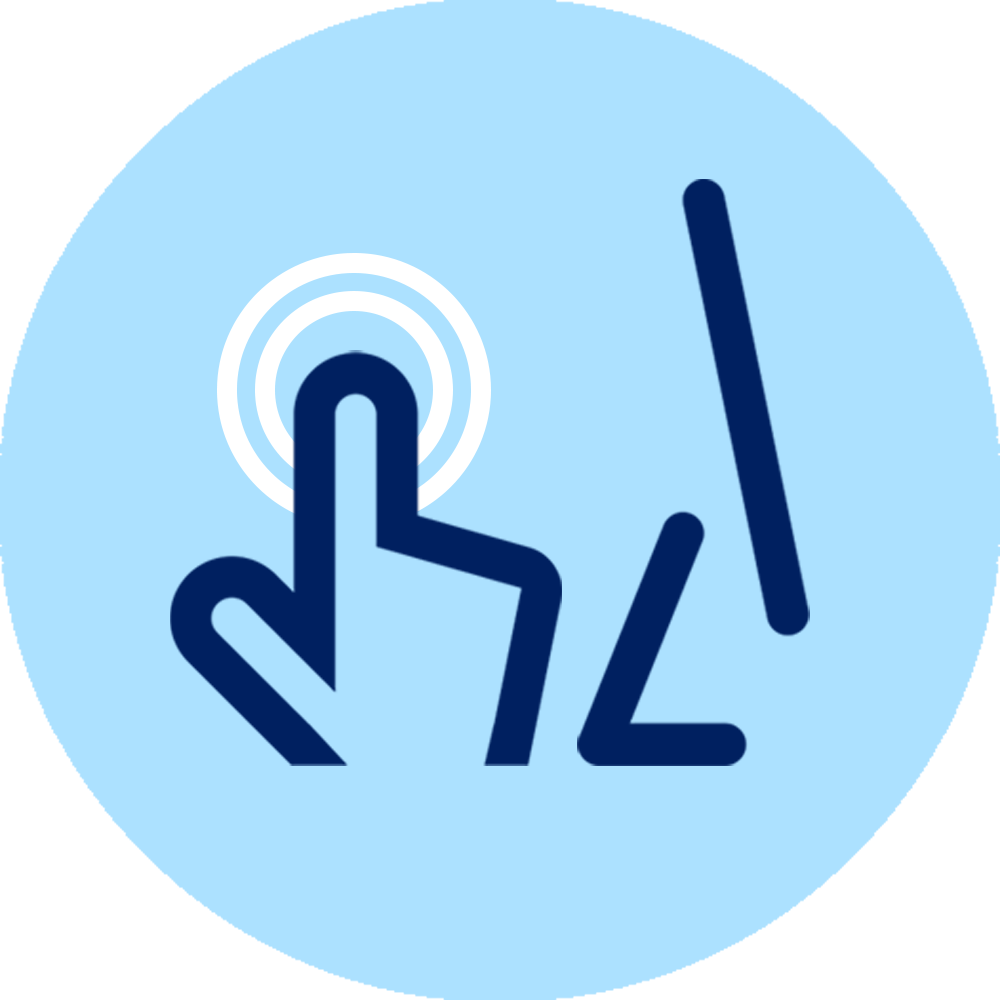
 Mata kuliah Interaksi Manusia dan Komputer ini berfokus pada proses desain interaksi antara manusia dengan komputer dan pembangunan antarmuka untuk melakukan interaksi. Interaksi antara manusia dengan komputer berlangsung di dalam antarmuka yang melibatkan perangkat lunak dan perangkat keras. Desain antarmuka berdampak pada daur hidup suatu perangkat lunak. Desain dan implementasi fungsi-fungsi pokok dalam suatu perangkat lunak mempengaruhi antarmuka pengguna. Mata kuliah ini melibatkan beberapa lintas disiplin ilmu seperti psikologi, ergonomi, antropologi, ilmu komputer, desain grafis dan produk. Melalui mata kuliah ini mahasiswa diharapkan mampu menerapkan prinsip-prinsip Interaksi Manusia dan Komputer (
Human-Computer Interaction) pada perangkat lunak yang dikembangkan melalui kerangka Pemikiran Desain yang berpusat pada pengguna, dan melaporkan evaluasi ketergunaan dari perangkat lunak tersebut.
Mata kuliah Interaksi Manusia dan Komputer ini berfokus pada proses desain interaksi antara manusia dengan komputer dan pembangunan antarmuka untuk melakukan interaksi. Interaksi antara manusia dengan komputer berlangsung di dalam antarmuka yang melibatkan perangkat lunak dan perangkat keras. Desain antarmuka berdampak pada daur hidup suatu perangkat lunak. Desain dan implementasi fungsi-fungsi pokok dalam suatu perangkat lunak mempengaruhi antarmuka pengguna. Mata kuliah ini melibatkan beberapa lintas disiplin ilmu seperti psikologi, ergonomi, antropologi, ilmu komputer, desain grafis dan produk. Melalui mata kuliah ini mahasiswa diharapkan mampu menerapkan prinsip-prinsip Interaksi Manusia dan Komputer (
Human-Computer Interaction) pada perangkat lunak yang dikembangkan melalui kerangka Pemikiran Desain yang berpusat pada pengguna, dan melaporkan evaluasi ketergunaan dari perangkat lunak tersebut.This course focuses on the interaction design process between humans and computers and the development of interfaces for interaction. Interaction between humans and computers involves software and hardware. The interface design has an impact on the cycle of software development. On the other hand, the main functions in software development affect user interfaces. This course incorporates multi-discipline subjects, such as psychology, ergonomics, anthropology, computer science, graphics, and product design. Through this course, students are expected to be able to apply interaction principles in Human-Computer Interaction while developing software through Design Thinking that is user-centered and evaluating its usability.


Mata kuliah Interaksi Manusia dan Komputer ini berfokus pada proses desain interaksi antara manusia dengan komputer dan pembangunan antar muka untuk melakukan interaksi. Interaksi antara manusia dengan komputer, berlangsung di dalam antar muka yang melibatkan perangkat lunak dan perangkat keras. Desain antar muka berdampak pada daur hidup suatu perangkat lunak. Desain dan implementasi fungsi-fungsi pokok dalam suatu perangkat lunak mempengaruhi antar muka pengguna. Mata kuliah ini melibatkan beberapa lintas disiplin ilmu seperti: psikologi, ergonomi, antropologi, ilmu komputer, desain grafis dan produk. Melalui mata kuliah ini mahasiswa diharapkan mampu menerapkan prinsip-prinsip Interaksi Manusia dan Komputer (Human-Computer Interaction) pada perangkat lunak yang dikembangkan melalui kerangka Pemikiran Desain yang berpusat pada pengguna, dan melaporkan evaluasi ketergunaan dari perangkat lunak tersebut.
This course focuses on the process of interaction design between human and computer as well as the development of interface for interaction. Interaction between human and computer involves software and hardware. Interface design gives an impact to the cycle of software development. On the other hand, main functions in software development affects user interfaces. This course incorporates multi-discipline subjects, such as psychology, ergonomics, anthropology, computer science, graphic and product designs. Through this course, students are expected to be able to apply interaction principles in Human-Computer Interaction while developing a software through Design Thinking that is user centered and evaluating its usability.

Interaksi Manusia dan Komputer (IMK) adalah bidang interdisipliner yang meneliti bagaimana manusia berinteraksi dengan perangkat lunak, dengan tujuan untuk menciptakan antarmuka yang intuitif dan memenuhi kebutuhan pengguna. Kursus ini mengintegrasikan prinsip-prinsip dari psikologi, ergonomi, antropologi, dan desain visual untuk mengembangkan solusi yang efektif dan inklusif. Mahasiswa akan belajar menerapkan prinsip desain interaktif, menganalisis interaksi pengguna, serta merancang dan mengevaluasi antarmuka pengguna yang mengedepankan kepuasan dan keterlibatan pengguna. Kursus ini juga menekankan pentingnya pemahaman terhadap model mental, siklus timbal balik, dan heuristik untuk meningkatkan usability dan aksesibilitas.
Human-Computer Interaction (HCI) is an interdisciplinary field exploring how humans interact with software, aiming to create intuitive interfaces that meet user needs. This course integrates principles from psychology, ergonomics, anthropology, and visual design to develop effective and inclusive solutions. Students will learn to apply interactive design principles, analyze user interactions, and design and evaluate user interfaces that prioritize user satisfaction and engagement. The course also emphasizes the importance of understanding mental models, feedback loops, and heuristics to enhance usability and accessibility.
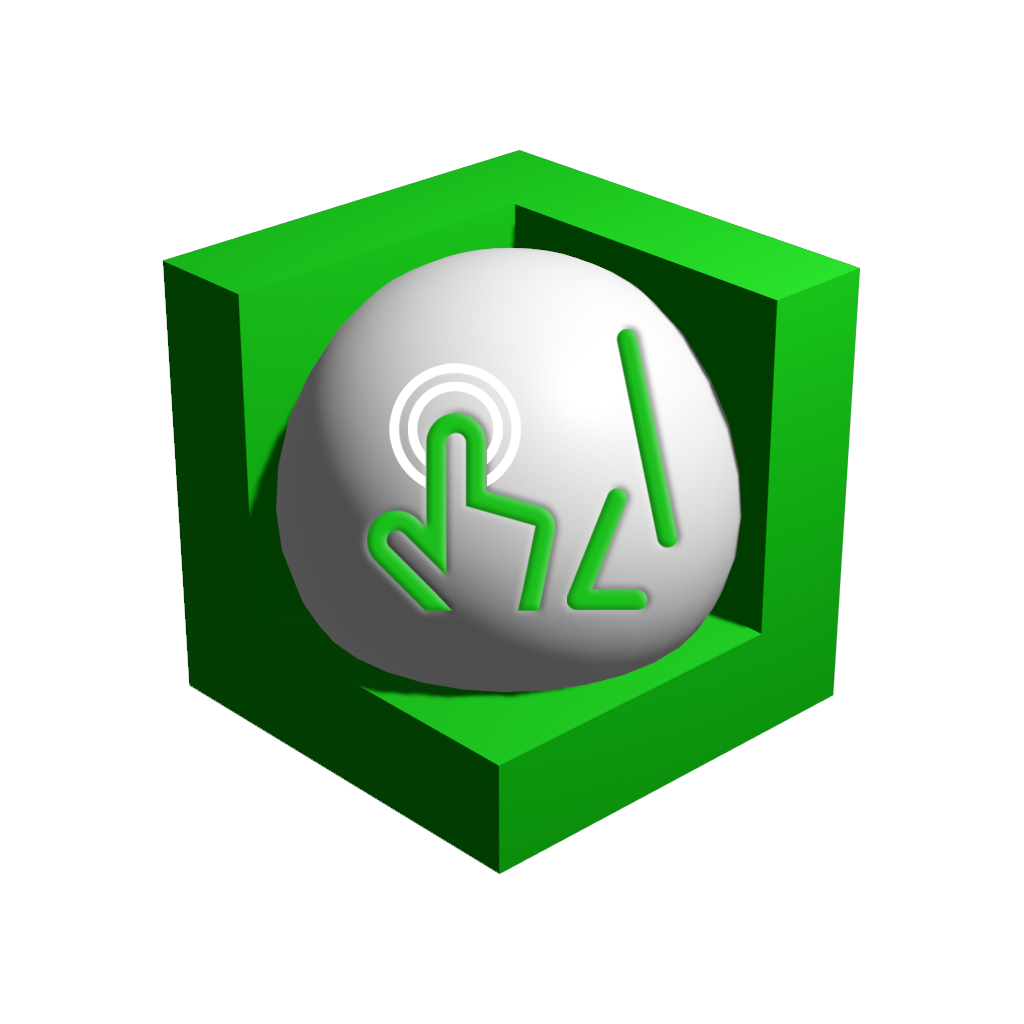
Human-Computer Interaction (HCI) is
an interdisciplinary field exploring how humans interact with software,
aiming to create intuitive interfaces that meet user needs. This course
integrates psychology, ergonomics, anthropology, and visual design
principles to develop effective and inclusive solutions. Students will
learn to apply interactive design principles, analyze user interactions,
and design and evaluate user interfaces that prioritize user
satisfaction and engagement. The course also emphasizes the importance
of understanding mental models, feedback loops, and heuristics to
enhance usability and accessibility.
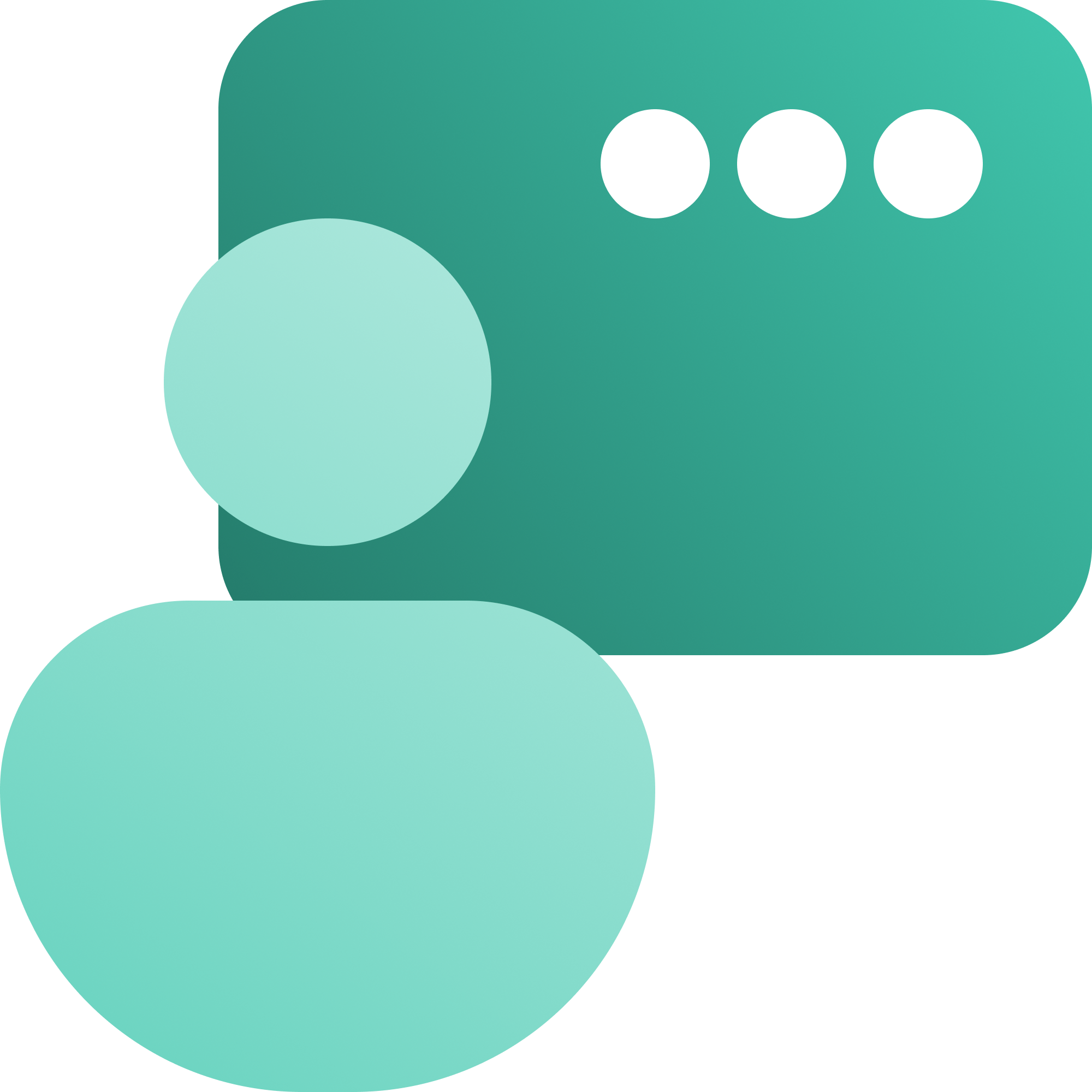

Mata kuliah Interaksi Manusia dan Komputer ini berfokus pada proses desain interaksi antara manusia dengan komputer dan pembangunan antar muka untuk melakukan interaksi. Interaksi antara manusia dengan komputer, berlangsung di dalam antar muka yang melibatkan perangkat lunak dan perangkat keras. Desain antar muka berdampak pada daur hidup suatu perangkat lunak. Desain dan implementasi fungsi-fungsi pokok dalam suatu perangkat lunak mempengaruhi antar muka pengguna. Mata kuliah ini melibatkan beberapa lintas disiplin ilmu seperti: psikologi, ergonomi, antropologi, ilmu komputer, desain grafis dan produk. Melalui mata kuliah ini mahasiswa diharapkan mampu menerapkan prinsip-prinsip Interaksi Manusia dan Komputer (Human-Computer Interaction) pada perangkat lunak yang dikembangkan melalui kerangka Pemikiran Desain yang berpusat pada pengguna, dan melaporkan evaluasi ketergunaan dari perangkat lunak tersebut.
This course focuses on the process of interaction design between human and computer as well as the development of interface for interaction. Interaction between human and computer involves software and hardware. Interface design gives an impact to the cycle of software development. On the other hand, main functions in software development affects user interfaces. This course incorporates multi-discipline subjects, such as psychology, ergonomics, anthropology, computer science, graphic and product designs. Through this course, students are expected to be able to apply interaction principles in Human-Computer Interaction while developing a software through Design Thinking that is user centered and evaluating its usability.

|
Tactical decisions: Product • Developing product • Service marketing
|
Production Management is a main course for Material and Metallurgical Engineering students. The learning outcome of this course is students to understand how a production process is planned, implemented and controlled. This course was originally a combined course of 3 other courses, namely production management, operations research and engineering economics
Matakuliah Managemen Produksi adalah matakuliah wajib bagi mahasiswa teknik. Tujuan pembelajaran matakuliah ini adalah agar mahasiswa dapat memahami tentang bagaimana suatu proses produksi direncanakan, dilaksanakan dan dikontrol agar proses produksi dapat berjalan dengan baik. Mata kuliah ini pada awalnya merupakan mata kuliah gabungan dari 3 matakuliah yang lain yaitu manajemen produksi sendiri, research operasi dan ekonomi teknik.
Learning Outcome Production Management
1. Student able to know the basic concept of production management
2. Student able to explain the basic concept of production management
3. Student able to solve the problem of production application
Course plan
1. Introduction ( Learning outcome, Basic Concept of Production Management, Course Contract etc)
2. Operation Management
3. Manufactur capacity planning
4.Demand forecasting
5.Machine Capacity Planning
6. Operation schedule and Quality Control
7.Manufactur Maintenance
8. Mid test
10. Cash Flow diagram
11. Metode Komparasi ( Present Worth Method, Future Worth Method,
12.Annual Equivalent Method
13.Rate of Return Method
14. Problem Solving Case Study
15. Presentation
16. Final Test
To survive and thrive in a competitive business environment, organisations require more than just business strategic plans. They need the right talented human resources to put those strategic objectives into place and effectively implement the business plans. Human resource management (HRM) is defined as the effective use of human capital in an organisation through the management of people-related activities. The general purpose of HRM course is to familiarise students with the basic principles and techniques of HRM with the technical aspects of implementing the HR function in the ‘real business world.’ The course involves strategic HR, employment planning, recruiting and selecting employees, training and compensating them, and evaluating their performance.
Upon completion of the HRM course, students will be able to, as follows:
1. Articulate the importance of aligning strategic HR and Business Strategy.
2. Discuss the HR role in relation to other functions in the organization to improve business performance.
3. Understand the scope of HR functions/practices: Job analysis, HR planning, HR Training and Development, Performance Management, and Compensation system, and the ways they relate to improving HR performances.
4. Describe employee assessment and development strategies and tactics.
5. Discuss current issues, emerging trends, opportunities and challenges in HRM.
6. Awaken in the students’ sense of managerial responsibility by critically evaluating the existing HR system of particular case study (company) and proposing a particular approach to improve the HR system.
1. Dessler, G. (2020). Human Resource Management (16th edition), Pearson.
2. Jones, Gareth R., Organizational Theory, Design, and Change, 7th Edition, Global Edition, Pearson, 2012.
Relevant Case Studies and Research Papers.Transportation
and Warehousing Management
Learning Outcome
Students are able to:
· Explain the strategic roles of transportation and warehousing.
· Explain the typical processes of transportation and warehousing.
· Have the capability of analyzing transportation and warehousing data for identifying problems and finding improvement opportunities.
· Aware of the technological development surrounding
transportation and warehousing.
This course is particularly aimed at graduate/master level as text as assumes enough knowledge of chemistry, physics or basics material electronic. It aims to convey a basic understanding of a wide range of electronic and ionic material important to today’s world. Learning outcome for this course :
1. Student able to know and explain basic concept of electronics material
2. Student able to design properties of electronic material
3. Student able to solve material electronics problem
4. Student able to apply electronic material
Course Plan
Meeting 1. Introduction
Meeting 2. Basic Concept : Static & Dinamic Electricity, Clasic Teory of Electrical conduction
Meeting 3. Basic Concept : Electron-Energy in Solid (Quanta & Waves, Fermy)
Meeting 4. Electron Emission : Works Function, Photo emission, Photocthode,
Meeting 5. Basic Concept : TCR, Matthisen Rule, Drude, Hall Effect
Meeting 6. Semiconductor (1) : Instrinsik-Ekstrinsik, Lattice effect, P-N Junction
Meeting 7- 8. Mid Test
Meeting 9. Superconductor (2) : Doping Process, CVD-PVD, Lithography-Etching
Meeting 10. Dielectric Material
Meeting 11. Thermal and Electric Material
Meeting 12. Ionic Properties of Material
Meeting 13. Comprehanship
Meeting 14 .
Meeting 15 . Thermal Management Electronics
Meeting 16 . Final Test
This class covers all of the basic topics of mechanics of materials, presented at a level suitable for sophomore and junior engineering students. The principal topics are the analysis and design of structural members subjected to tension, compression, torsion, and bending, including such fundamental concepts as stress, strain, elastic behavior, inelastic behavior, and strain energy. Other topics of general interest are the transformations of stress and strain, combined loadings, stress concentrations, deflections of beams, and stability of columns. More specialized topics are thermal effects, dynamic loading, non prismatic members, beams of two materials, shear centers, pressure vessels, and statically indeterminate beams. For completeness and occasional reference, elementary topics such as shear forces, bending moments, centroids, and moments of inertia are also presented.
|
Dalam mata kuliah ini akan mempelajari pokok-pokok bahasan sebagai berikut: - Thermoplastic: jenis-jenis thermoplastik/polymer , sifat phisik, dan aplikasinya di industri - Cetakan injeksi plastik: perancangan rongga cetakan, runner, gate dan sprue, perhitungan waktu siklus dan perancangan pendinginan cetakan - Cetakan tiup plastik: jenis-jenis cetakan tiup, perancangan cetakan, |
The Pancasila course is one of the general/national compulsory courses. In this lecture, students will gain knowledge and learning experiences to increase understanding and awareness of a sense of nationality and love for the country through insight into Pancasila so that they become citizens who have competitiveness, are highly disciplined and actively participate in building a peaceful life based on the Pancasila value system. After this lecture, it is hoped that students will be able to manifest themselves into good citizens who are able to support their nation and state. Citizens who are smart, civilized and responsible for the survival of the Indonesian state in exercising their skills in science, technology and the arts.
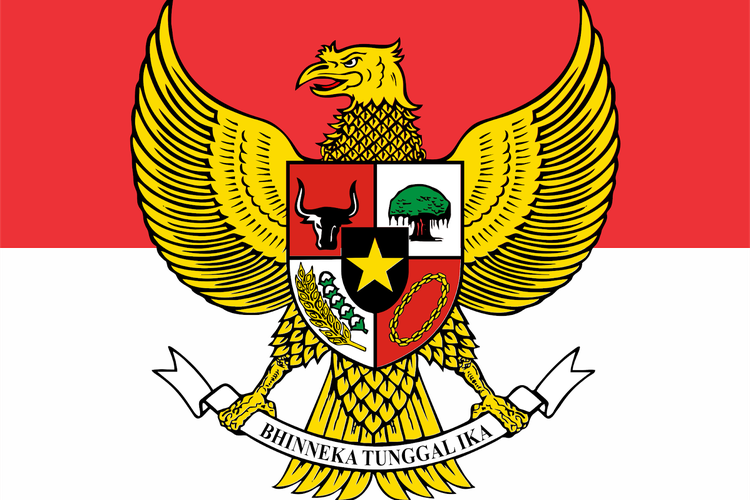
Training and Development or HRD course represents one of chapters in human resources management (HRM) that discusses the different aspects of staff development in dynamic organisations. This course provides an in-depth understanding how HRD is designed, executed, and evaluated, particularly in the form of training and other people development programmes. Furthermore, the HRD course introduces the training techniques and methods, the factors which contribute to successful training and the criteria and methods in assessing the multiple objectives of staff development activities.
This course explores the intersection of artificial intelligence and architectural design, delving into the concept of synthetic imagination. Students will investigate how AI can reimagine and expand the boundaries of architecture. The emphasis is on AI-powered tools that support architects in envisioning novel forms, spatial configurations, and technical aspects while addressing challenges in a new context. Through this, students will deepen their understanding of architecture’s future direction and how it may transform the ways people experience and occupy spaces.
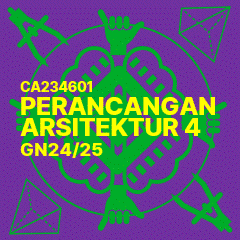
This design course is intended for developing design skill and knowledge within specific building’s issue (i.e sustainable architecture). This course will provide fundamentals of good, common-sense green building design principles from many point of views (technically, socially and culturally) including the quantification of the impact of passive bio-climatic design strategies, followed by more active options. The EDGE software application will be used as a tool to demonstrate the impact of the strategies. At the end of this course, students will be able to develop and apply design knowledge into a profitable, built-able, and sustainable architecture as well as be able to integrate efficiency into design, evaluate its impact, and learn how to posit themselves as champions of sustainability.
Praktikum Rangkaian Eletronika merupakan praktikum yang mencakup dasar komponen elektronika aktif seperti dioda dan transistor. Praktikan WAJIB sudah mengambil mata kuliah Rangkaian Elektronika untuk dapat mengikuti praktikum Rangkaian Elektronika.
Electronic Circuit Practicum is a practicum that covers the basics of active electronic components such as diodes and transistors. Practice must have taken the Electronic Circuit course to be able to take part in the Electronic Circuit practicum.
Contact Person Koordinator Praktikum Rangkaian Elektronika Semester Genap 2023/2024
Jeremy Pardede
Nomor HP :+62 851-5885-2800
Production planning and inventory control is a central functions in any manufacturing company. It deals with optimizing the use of production resources in order to satisfy customers’ demand. The objective of this course is to introduce to students various concepts, techniques, methods, and practical issues related to production planning and control.
NOTE -- The guest lecture will be conducted between week 10-15 as the topics delivered in week 10-15 do not always need to be sequential. The details about the guest lecture will be provided later before the midterm exam. Please stay updated in the WhatsApp group and My ITS Classroom.
Teaching assistants: Althoff and Alicia
EB4603 Project Design
This course studies about capstone design which are planned in form of forms completion in order to make student able to design project. The plans are started from literature review, proposal formulation, analyzing from business side, and listing the competent which are needed to complete the project.
Mata kuliah Proposal Tugas Akhir bertujuan untuk membekali mahasiswa dengan keterampilan yang diperlukan dalam menyusun proposal tugas akhir yang meliputi abstrak, pendahuluan, studi literatur, dan metodologi dengan struktur dan penulisan yang baik dan benar. Mahasiswa juga akan dibimbing dalam mengidentifikasi bidang minat, memilih topik penelitian yang relevan, dan menentukan dosen pembimbing yang sesuai.
Selain itu, mahasiswa diharapkan mampu mempresentasikan proposal tugas akhir mereka di hadapan kelompok, menerima dan menerapkan umpan balik yang diberikan untuk memperbaiki proposal, hingga finalisasi yang akan diunggah ke MyITS Thesis.
Proses pembelajaran mencakup penulisan dan penyusunan komponen proposal, teknik presentasi, serta komunikasi efektif dengan dosen pembimbing. Materi akan disampaikan melalui kelas dan studi kasus yang berfokus pada penerapan logika, strategi pencarian literatur, penggunaan alat bantu seperti Mendeley dan Scopus, serta penyusunan abstrak dan metodologi yang baik.
Mata kuliah ini menjadi landasan penting bagi mahasiswa untuk memulai tugas akhir mereka dengan metode yang sistematis, logis, dan inovatif, serta mampu berkontribusi nyata dalam menyelesaikan masalah di bidang informatika.

proses manufaktur 1 meliputi proses perubahan dari bahan baku material logam yang solid menjadi sebuah produk komponen logam melalui proses operasional pemotongan dengan menggunakan perkaka manual maupun menggunakan mesin perkakas. Setiap perubahan ada nilai tambah, perubahan nilai tersebut disebut nilai tambah (added value). Sebenarnya proses pemotongan (cutting) melalui proses perautan dengan menggunakan pahat potong (cutting tool) ini sangat tidak efisien. namun kelemahan ini dapat dikompensasi dengan kelebihan-kelebihan yang tidak dapat diwujudkan melalui proses pembentukan logam (metal forming) yang lain. Proses pemotongan dengan menggunakan mesin perkakas dapat menghasilkan komponen berbahan logam padat yang dapat dikendalikan dengan tuntas seperti mengendalikan bentuk, ukuran, kehalusan dan toleransi. Sedangkan metal forming yang lain , walaupun prosesnya lebih effisien tetapi produk yang dihasilkan sulit dikendalikan dengan tuntas. Materi promanu meliputi : peralatan bangku kerja, peralatan lay out work, alat bantu untuk mengetahui ukuran, selanjutnya mempelajari mesin-mesin perkakas seperti mesin bubut (engine lathe), mesin drilling (drilling machine), mesin shaper (shaping machine), mesin freis (milling machine). Mengetahui kemampuan mesin perkakas, peralatan potong, mengetahui bagian-bagian mesin dan mekanisme kerja mesin perkakas.

|
Capaian Pembelajaran (CP) |
CP-PRODI |
|
|
|
Mampu merancang sistem, komponen, atau proses dalam bidang teknik fisika untuk memenuhi kebutuhan yang ditetapkan serta batasan operasional yang realistis (CP3). Mampu mengidentifikasi, memformulasi, dan menyelesaikan masalah kerekayasaan di bidang teknik fisika (CP4). Mampu menggunakan teknik, keterampilan, dan peralatan kerekayasaan modern yang diperlukan dalam bidang teknik fisika (CP5). |
|||
|
CP-MK |
|
||
|
Mahasiswamampumenggunakankonseprangkaianlistrikuntukmenyelesaikandanmenganalisis problem dalamsuaturangkaian |
|||
|
DiskripsiSingkat MK |
Pada mata kuliah Rangkaian Listrik ini, mahasiswa mempelajari dasar-dasar rangkaian listrik yang meliputi rangkaian listrik AC dan DC, analisa rangkaian transien dan steady, analisa rangkaian 3 fasa dan transformator.
|
||
|
Pokok Bahasan / Bahan Kajian |
1. Konsepdasarrangkaian: SistemSatuan, Komponen RLC, SumberArus, SumberTegangan, Hukum Ohm, HukumKirchoff I dan II, HubunganseridanParelel, PembagianTegangandanArus. 2. RangkaianRLC :AljabarFasor, Impedansi, Admitansi, Resonansi. 3. Rangkaian Transient: Arusdantegangan transient 4. DayaRangkaianRLC :Daya rata-rata, DayaEfektif, FaktorDaya. 5. AnalisaRangkaian: Analisa Mesh, Analisa Node, TeoremaThevenin, Theorema Norton 6. Rangkaiantigafasa : Sistemsatufase, sistemtigaFasa Y-Y, Koneksi Delta, Transformasi Y- ; PengukuranDaya 7. Transformator : Induktansigandeng, Rangkaiandengantransfomator linier, Impedansibalik, Transfomator ideal, RangkaianEkivalen 8. Analisarangkaianmenggunakan program aplikasi |
||
|
Pustaka |
Utama: |
|
|
|
PJohnson, David E, et all, “Electric Circuit Analysis”, Prentice-Hall International Edition, 1989 |
|||
|
Pendukung : |
|
||
|
1. Hayt JR, Kemmerly, “Engineering Circuit Analysis”, McGraw Hill, 2012 2. Donald E Scott, “An Introduction to Circuit Analysis”, McGraw Hill, 1987 |
|||
Mata kuliah Realitas X menyajikan konsep-konsep dasar dan teknik-teknik lanjutan dalam desain dan implementasi lingkungan imersif. Mengacu pada "The VR Book: Human-Centered Design for Virtual Reality" (2016), mata kuliah ini akan menekankan pentingnya desain yang berpusat pada manusia dalam realitas virtual. Dengan memanfaatkan "3D User Interfaces: Theory and Practice" (2017), mahasiswa akan mendalami teori dan praktek antarmuka pengguna 3D, memahami bagaimana interaksi manusia-komputer dapat dioptimalkan dalam lingkungan virtual. Selain itu, berdasarkan "Virtual and augmented reality (VR/AR): Foundations and methods of extended realities (XR)" (2022), mata kuliah ini juga akan mengeksplorasi fondasi dan metode dari realitas yang diperluas, memberikan pemahaman yang komprehensif tentang teknologi dan aplikasinya dalam dunia nyata. Melalui pendekatan ini, mahasiswa tidak hanya akan memahami teknologi yang mendasarinya tetapi juga bagaimana teknologi ini dapat diaplikasikan untuk menyelesaikan masalah dunia nyata.
eXtended Reality course presents foundational concepts and advanced techniques in the design and implementation of immersive environments. Drawing from "The VR Book: Human-Centered Design for Virtual Reality", this course will emphasize the importance of human-centered design in virtual reality. Utilizing "3D User Interfaces: Theory and Practice", students will delve into the theory and practice of 3D user interfaces, understanding how human-computer interaction can be optimized in virtual settings. Additionally, based on "Virtual and augmented reality (VR/AR): Foundations and methods of extended realities (XR)", the course will also explore the foundations and methods of extended realities, providing a comprehensive understanding of the technology and its applications in the real world. Through this approach, students will not only grasp the underlying technology but also how it can be applied to solve real-world problems.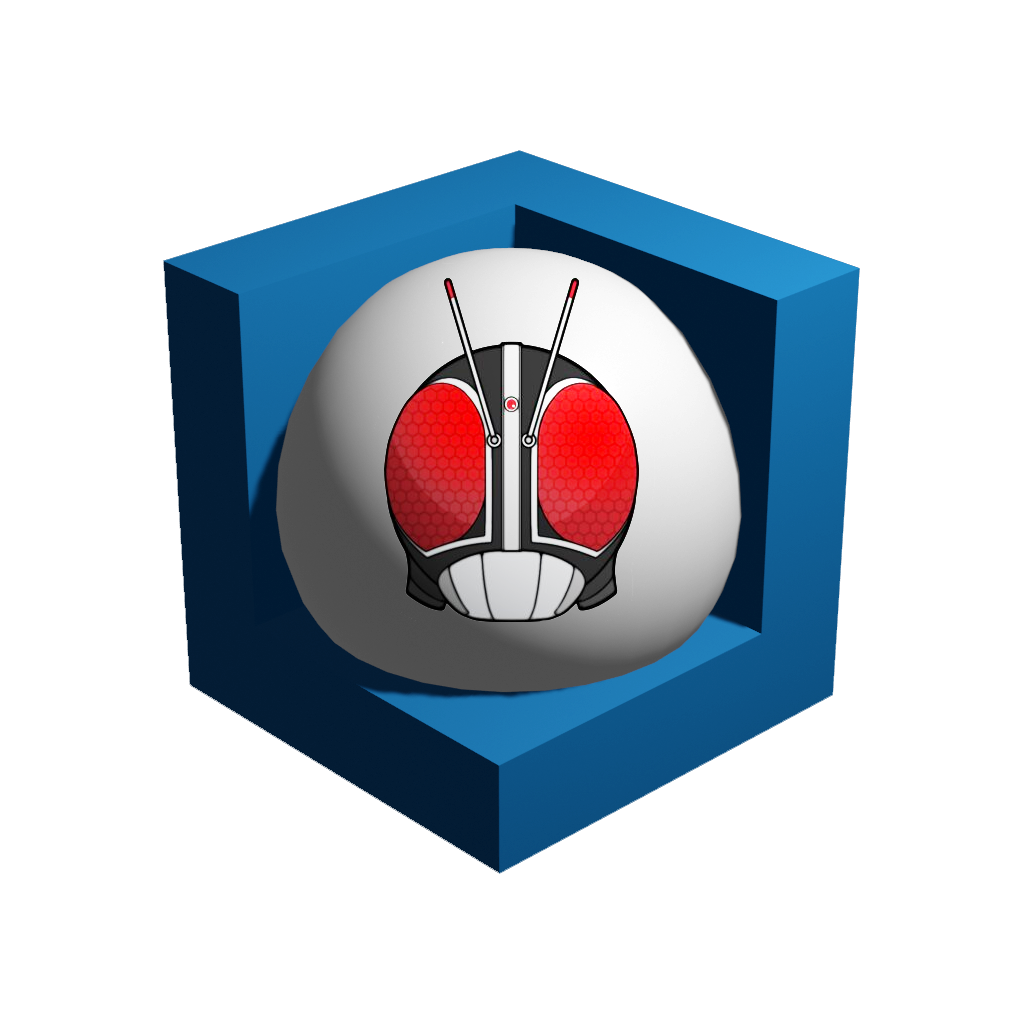
Mata kuliah "Realitas X" mencakup pembahasan mendalam mengenai desain dan teknis yang dibutuhkan untuk mengimplementasikan lingkungan imersif pada platform Realitas X, yang meliputi realitas virtual, realitas berimbuh, dan realitas campuran. Mata kuliah ini mengintegrasikan topik-topik komputasi dan interaksi, seperti evolusi teknologi pendukung termasuk tampilan visual, pelacak gerakan, grafika 3D interaktif, integrasi sensor multimodal, audio spasial, antarmuka pengguna, Internet of Things (IoT), gim, dan desain pengalaman. Melalui kuliah ini, mahasiswa diharapkan dapat memahami elemen input dan output pada realitas X, memodelkan objek dalam lingkungan virtual, memprogram interaksi antara pengguna dan objek virtual, serta mengembangkan solusi realitas X menggunakan mesin gim untuk menyelesaikan masalah di dunia nyata.
The course "Reality X" provides an in-depth exploration of the design and technical aspects required for implementing immersive environments on the Reality X platform, encompassing virtual reality, augmented reality, and mixed reality. This course integrates computational and interaction topics, such as the evolution of supporting technologies including visual displays, motion tracking, interactive 3D graphics, multimodal sensor integration, spatial audio, user interfaces, Internet of Things (IoT), games, and experience design. Through this course, students are expected to understand the input and output elements of Reality X, model objects within virtual environments, program interactions between users and virtual objects, and develop Reality X solutions using game engines to address real-world problems.

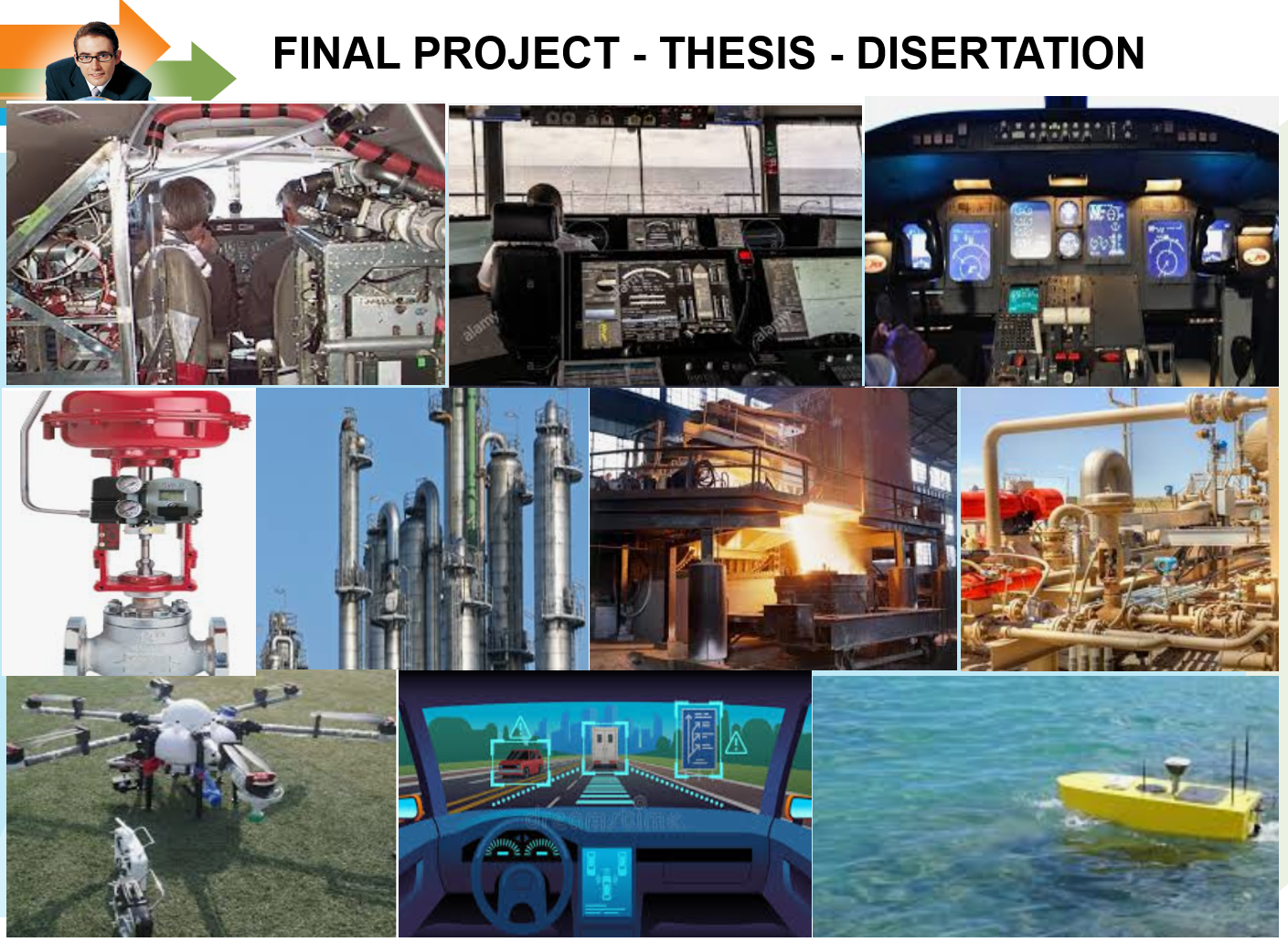

This course provides students with the materials and learning environment to understand several areas of academic research as it pertains to the field of human resource management (HRM), and its alignment to business strategy and organization performance. Hence, this seminar covers research areas including: Strategic management, strategic human resource management, organization and employee performance management, strategic human resource planning, people development and training, training need analysis, organization design and behavior, and using research methods from strategic and performance management, HRM, behavioral research literatures. The seminar will help students to exercise their knowledge in strategic, performance, and human resource management by building a mini-research project plan.
The course explores the dimensions of successful service firms. It prepares students for enlightened management and suggests creative entrepreneurial opportunities. Outstanding service organizations are managed differently than their "merely good" competitors. Actions are based on totally different assumptions about the way success is achieved. The results show not only in terms of conventional measures of performance but also in the enthusiasm of the employees and quality of customer satisfaction. Beginning with the service encounter, service managers must blend marketing, technology, people, and information to achieve a distinctive competitive advantage.
Moreover, the course will focus on service management from an integrated viewpoint with a focus on customer satisfaction. The material will integrate operations, marketing, strategy, information technology, and organizational issues. Finally, because the service sector is the fastest-growing sector of the economy, this course is intended to help students discover entrepreneurial opportunities.
Kuliah ini dirancang untuk mahasiswa sekolah bisnis. Kuliah ini memberikan wawasan tentang bagaimana bisnis saat ini memanfaatkan teknologi dan sistem informasi untuk mencapai tujuan perusahaan. Selain itu, kuliah ini menyediakan cakupan yang komprehensif dan integratif dari teknologi baru yang penting dan aplikasi sistem informasi berikut dampaknya terhadap model bisnis dan pengambilan keputusan manajerial. Kuliah ini dirancang untuk meningkatkan keterlibatan mahasiswa dan meningkatkan pembelajaran melalui contoh nyata. Mahasiswa akan menemukan informasi terbaru dan relevan tentang sistem informasi yang digunakan oleh bisnis saat ini yang menarik perhatian mahasiswa terlepas dari industri atau vertikal minat mereka. Melalui kuliah ini, mahasiswa akan membangun keterampilan yang dicari di tempat kerja saat ini. Nantinya, mereka akan dapat memahami, berpartisipasi, dan pada akhirnya memimpin diskusi manajemen dan mendorong keputusan tentang sistem informasi perusahaan mereka.
This course is designed for business school students. It provides insight into how today's businesses leverage information technologies and systems to achieve corporate objectives. Also, it provides comprehensive and integrative coverage of essential new technologies and information system applications and their impact on business models and managerial decision-making. This course increases student engagement and enhances learning through vivid examples. Students will find the most up-to-date, relevant information about information systems used by today’s businesses—capturing students’ attention no matter their industry or vertical of interest. With the help of this course, students will build skills sought after in today’s workplace. Later, they will be able to understand, participate in, and eventually lead management discussions and drive decisions about their firm’s information systems.
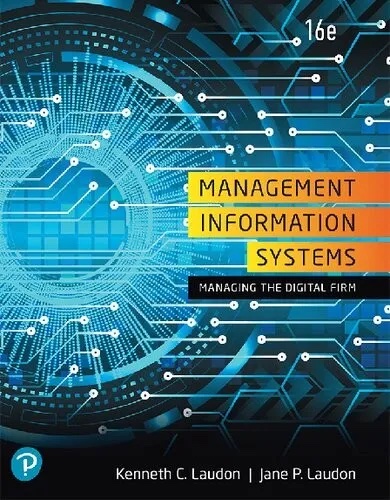
Kuliah ini dirancang untuk mahasiswa sekolah bisnis. Kuliah ini memberikan wawasan tentang bagaimana bisnis saat ini memanfaatkan teknologi dan sistem informasi untuk mencapai tujuan perusahaan. Selain itu, kuliah ini menyediakan cakupan yang komprehensif dan integratif dari teknologi baru yang penting dan aplikasi sistem informasi berikut dampaknya terhadap model bisnis dan pengambilan keputusan manajerial. Kuliah ini dirancang untuk meningkatkan keterlibatan mahasiswa dan meningkatkan pembelajaran melalui contoh nyata. Mahasiswa akan menemukan informasi terbaru dan relevan tentang sistem informasi yang digunakan oleh bisnis saat ini yang menarik perhatian mahasiswa terlepas dari industri atau vertikal minat mereka. Melalui kuliah ini, mahasiswa akan membangun keterampilan yang dicari di tempat kerja saat ini. Nantinya, mereka akan dapat memahami, berpartisipasi, dan pada akhirnya memimpin diskusi manajemen dan mendorong keputusan tentang sistem informasi perusahaan mereka.
This course is designed for business school students. It provides insight into how today's businesses leverage information technologies and systems to achieve corporate objectives. Also, it provides comprehensive and integrative coverage of essential new technologies and information system applications and their impact on business models and managerial decision-making. This course increases student engagement and enhances learning through vivid examples. Students will find the most up-to-date, relevant information about information systems used by today’s businesses—capturing students’ attention no matter their industry or vertical of interest. With the help of this course, students will build skills sought after in today’s workplace. Later, they will be able to understand, participate in, and eventually lead management discussions and drive decisions about their firm’s information systems.

This course provides an understanding to you regarding knowledge for managing and analyzing the Information System effects on enterprises' business competitiveness. This course covers the concepts and theories of Information System as well as skills to design and to improve the business process by using Information System.
Sistem manufaktur sebagai bagian penting dari industri modern harus dirancang dan dikendalikan dengan baik untuk mencapai tujuan strategis misalnya memenuhi kebutuhan pelanggan baik jumlah yang tepat, kualitas, dan waktu pengiriman yang lebih singkat. Kriteria tersebut akan memastikan perusahaan untuk bertahan dan bersaing secara optimal. Mata kuliah ini membahas tentang komponen dari sistem manufaktur dan cara pengelolaannya. Komponen penyusun sistem manufaktur seperti fasilitas produksi, penyimpanan dan penanganan material, serta inspeksi sebagai satu sistem yang diperlukan untuk menghasilkan produk konkrit (tangible products). Karakteristik operasi sistem manufaktur sangat dipengaruhi oleh rancangannya. Akan dibahas karakteristik operasi dari sebuah sistem manufaktur yang meliputi laju produksi, waktu siklus, dan manufacturing lead time, dan kebutuhan sumber daya yang diperlukan untuk memenuhi suatu permintaan produk. Akan dibahas pula hal-hal yang berkaitan dengan perkembangan dan upaya peningkatan efisiensi sistem manufaktur seperti Otomasi System Manufaktur, Pemanfaatan Flexible Manufacturing System, Just-in-Time Production System, Lean Manufacturing System, dan Agile Manufacturing System.
Manufacturing systems as an important part of modern industry must be well designed and controlled to achieve strategic goals such as meeting customer needs in terms of quantity, quality, and shorter delivery times. These criteria will ensure that the company survives and competes optimally. This course discusses the components of a manufacturing system and how to manage them. The components of a manufacturing system such as production facilities, storage and material handling, and inspection as a system needed to produce tangible products. The operating characteristics of a Manufacturing System are greatly influenced by its design. The operating characteristics of a Manufacturing System will be discussed, including production rate, cycle time, and Manufacturing Lead Time, as well as the resource requirements needed to meet a product demand. Matters related to the development and efforts to improve the efficiency of Manufacturing Systems such as Manufacturing System Automation, utilization of Flexible Manufacturing Systems, Just-in-Time Production Systems, Lean Manufacturing Systems, and Agile Manufacturing Systems will also be discussed.
PEMBELAJARAN/ Learning Outcomes:
Kuliah ini akan mempelajari sistem pembangkit daya kelautan canggih untuk mengatasi krisis bahan bakar dan polusi udara. Mempelajari teknologi baru dari sistem pembangkit daya kelautan yang mempunyai efisiensi tinggi dan dapat mengurangi polusi udara untuk memenuhi peraturan dari IMO ANNEX VI. Mempelajari sistem kendali pembangkit daya kelautan canggih.
This lecture will study the advanced marine power plant systems to address the fuel crisis and air pollution. Learn new technology from marine power plant system which has high efficiency and can reduce air pollution to meet the regulatory requirements of the IMO ANNEX VI. Studying advanced marine power plant control system.
Capaian Pembelajaran Pokok Bahasan/Learning Outcomes of the Subjec:
This course studies the static equilibrium of particles and rigid bodies, structural analysis, both related to the reactions of various types of supports and those related to internal force analysis. Students also learn about the relationship of load and stress, especially the procedure of stress analysis caused by a single load, as well as the introduction of static failure theory and its implementation in the design of machine elements.
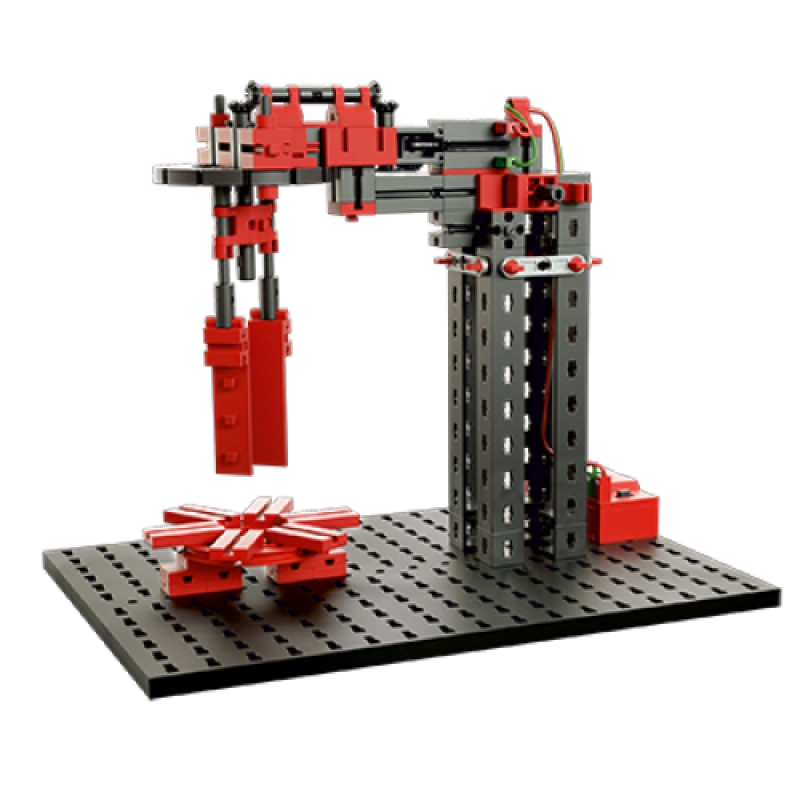
At the end of this course, students should:
1. Understand concepts of discrete probability, conditional probability, independence, and be able to apply these concepts to engineering applications (selected by instructor).
2. Understand mathematical descriptions of random variables including probability mass functions (PMFs), cumulative distribution functions (CDFs), probability distribution functions (PDFs), conditional mass, conditional distribution and conditional density functions.
3. Be familiar with some of the more commonly encountered random variables, in particular the Gaussian random variable.
4. Be able to calculate various moments of common random variables including at least means, variances and standard deviations.
5. Be able to calculate the distribution of a function of a random variable.
6. Be able to apply the concepts of random variables to engineering applications (selected by instructor).
7. Be able to mathematically characterize multiple random variables using joint PMFs, joint CDFs and joint PDFs.
8. Understand how to formulate the joint PDF of multiple Gaussian random variables.
9. Understand correlation, covariance, correlation coefficient and how these quantities relate to the independence of random variables
10. Be able to apply the concepts of multiple random variables to engineering applications (selected by instructor).
11. Be able to compute the sample mean and sample standard deviation of a series of independent observations of a random variable.
12. Be able to estimate the CDF and PDF of a random variable from a series of independent observations.
13. Understand the law of large numbers and the central limit theorem and how these concepts are used to model various random phenomena (selected by instructor).
14. Be able to compute confidence intervals associated with sample means
15. Be able to use statistical concepts to analyze and interpret engineering data
After finishing the subject student will be able to design concrete
structural element (beam, column, shearwall, BC-joint) in concrete
building structures subjected to earthquake loadings for common type
of building structures.
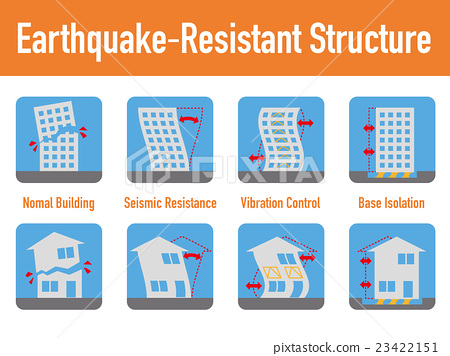
Materi Struktur Data mempelajari berbagai macam struktur penyimpanan, penyusunan dan pengaturan banyak data serta algoritma terkait. Konsep abstraksi data dibahas untuk menentukan jenis struktur data secara linear maupun non-linear dengan contoh-contoh permasalahan. Praktikum dalam bahasa C/C++ dilakukan untuk implementasi struktur data yang sesuai dalam menyelesaikan masalah.
The subject of Data Structures studies various storage structures, the arrangement and management of large amounts of data and related algorithms. The concept of data abstraction is discussed to determine the type of data structure in a linear or non-linear manner with examples of problems. Practical work in C/C++ was conducted for the implementation of appropriate data structures in solving problems.
Course Learning Outcome:
1. Mahasiswa mampu melakukan abstraksi data pada permasalahan nyata menurut konsep struktur data linear (stack, queue), non-linear (tree, graph) dan menggunakan C/C++.
Students are able to abstract data on real problems according to the concept of linear data structures (stack, queue), non-linear (tree, graph) and using C/C++.
2. Mahasiswa mampu mengimplementasikan algoritma-algoritma akses struktur data linear statis (array) dan dinamis (linked-list) untuk menyelesaikan permasalahan berdasarkan pada masuknya urutan data (FIFO, LIFO) menggunakan C/C++
Students are able to implement data access on linear static and dynamic data structures, array and linked list, to solve the problems based on order of data entry (LIFO, FIFO) using C/C++
3. Mahasiswa mampu menjelaskankan terminologi-terminologi dalam graf, menjelaskan dan menerapkan topological sort, mencari jarak terpendek dan minimum-cost spanning tree pada suatu graf.
Students are able to explain terminology in graphs, explain and apply topological sort, find the shortest distance and minimum-cost spanning tree in a graph.
4. Mahasiswa mampu mengimplentasikan tabel-hash, untuk mengakses data berdasarkan pemetaan data kunci ke nilai menggunakan C/C++.
Students are able to implement hash-tables, to access data based on key-value data mapping using C/C++.
REKOGNISI PEMBELAJARAN LAMPAU MK STUDI KASUS
BENTUK PEMBELAJARAN :REKOGNISI PEMBELAJARAN LAMPAU MK STUDI KASUS
BENTUK PEMBELAJARAN :The Land Use and Development course enables students to carry out land use planning in an urban and regional context.
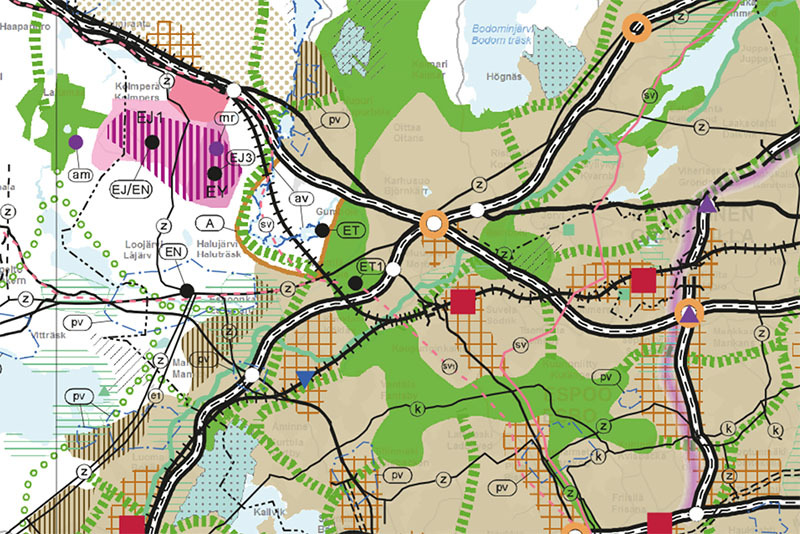

CPL-PRODI yang dibebankan pada MK
CPL-5 Mampu menjelaskan ilmu dasar perkapalan
Capaian Pembelajaran Mata Kuliah (CPMK)
Pustaka Utama:
Dosen Pengampu
because there will be an unplanned meeting, today's lecture schedule is changed to Thursday at 1:30 p.m.
You are all expected to learn and understand about CPL, CPMK, Evaluation Plan and most importantly a lesson plan before lectures start this Thursday
Mata kuliah S2 Topik Dalam Pengembangan Game, Realitas Virtual, dan Realitas Augmentasi mengajak Anda mengeksplorasi dunia imersif. Dalam kuliah ini, Anda akan mempelajari implementasi lingkungan imersif pada platform Realitas X, termasuk realitas virtual, realitas berimbuh, dan realitas campuran. Topik yang akan dijelajahi mencakup komputasi, interaksi, dan evolusi teknologi pendukung seperti tampilan visual, pelacak gerakan, grafika 3D interaktif, sensor multimodal, audio spasial, antarmuka pengguna, IoT, desain pengalaman, teknik pengembangan gim, dan mekanika gim. Mahasiswa diharapkan mampu melakukan riset pada ranah gim dan realitas X, memodelkan objek dalam lingkungan virtual, memprogram interaksi antara pengguna dan objek virtual, serta mengembangkan solusi inovatif untuk masalah dunia nyata melalui realitas virtual dan augmentasi.
This master's degree course “Topics in Game Development, Virtual Reality, and Augmented Reality” invites you to explore the immersive world. In this course, you will learn about implementing immersive environments on the Realitas X platform, including virtual reality, augmented reality, and mixed reality. The topics covered include computation, interaction, and the evolution of supporting technologies such as visual displays, motion trackers, interactive 3D graphics, multimodal sensors, spatial audio, user interfaces, IoT, experience design, game development techniques, and game mechanics. Students are expected to conduct research in the field of games and extended reality, model objects in virtual environments, program interactions between users and virtual objects, and develop extended reality using game engines to solve real-world problems. 🌟🎮🌐
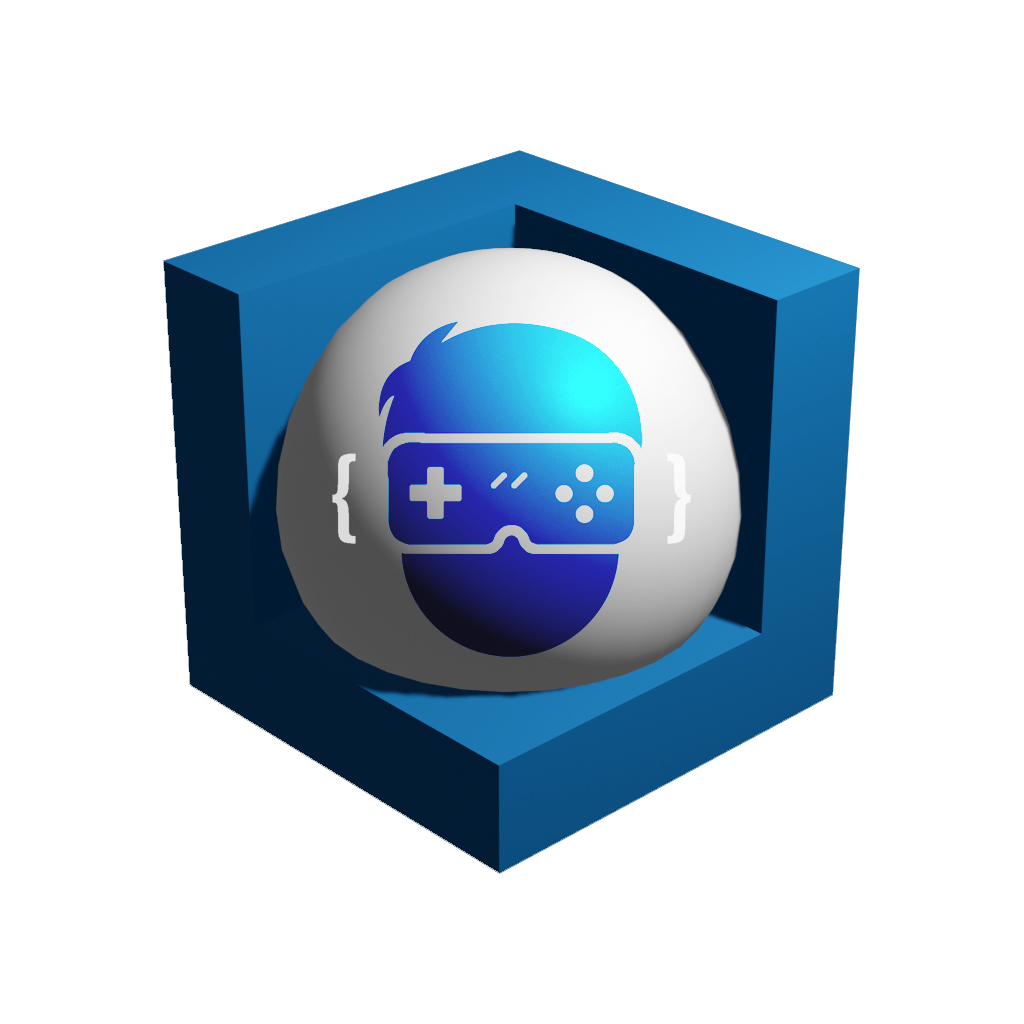
Mata kuliah ini mencakup pembahasan riset yang dibutuhkan untuk implementasi lingkungan imersif pada platform Realitas X, yakni realitas virtual, realitas berimbuh, dan realitas campuran, berikut mekanika gim ke dalamnya. Pembahasan akan memadukan topik-topik komputasi dan interaksi termasuk evolusi beberapa teknologi pendukung seperti tampilan visual, pelacak gerakan, grafika 3D interaktif, integrasi sensor multimodal, audio spasial, antarmuka pengguna, IoT, gim, desain pengalaman, teknik pengembangan gim, dan mekanika gim. Melalui kuliah ini, mahasiswa diharapkan mampu melakukan riset pada ranah gim dan realitas x, memodelkan objek dalam lingkungan virtual, memrogram interaksi antara pengguna dan objek virtual, dan mengembangkan realitas x menggunakan mesin gim untuk menyelesaikan masalah di dunia nyata.
This course covers the design and technical discussions required for implementing immersive environments on the Extended Reality (XR) platform, namely virtual reality (VR), augmented reality (AR), and mixed reality (MR), also including game mechanics into it. The discussion will combine computing and interaction topics, including the evolution of several supporting technologies such as visual displays, motion tracking, interactive 3D graphics, multimodal sensor integration, spatial audio, user interfaces, IoT, games, experience design, game dev technique, and game mechanics. Through this course, students are expected to be able to do research in games and extended reality, model objects in a virtual environment, program interactions between users and virtual objects, and develop extended reality using a game engine to solve real-world problems.
This master's degree course, “Topics in Game Development, Virtual Reality, and Augmented Reality,”
invites you to explore the immersive world. In this course, you will
learn about implementing immersive environments on the Extended Reality platform,
including virtual, augmented, and mixed reality. The
topics covered include computation, interaction, and the evolution of
supporting technologies such as visual displays, motion trackers,
interactive 3D graphics, multimodal sensors, spatial audio, user
interfaces, IoT, experience design, game development techniques, and game mechanics.
Students are expected to research games and
extended reality, model objects in virtual environments, program
interactions between users and virtual objects, and develop extended
reality using game engines to solve real-world problems. 🌟🎮🌐
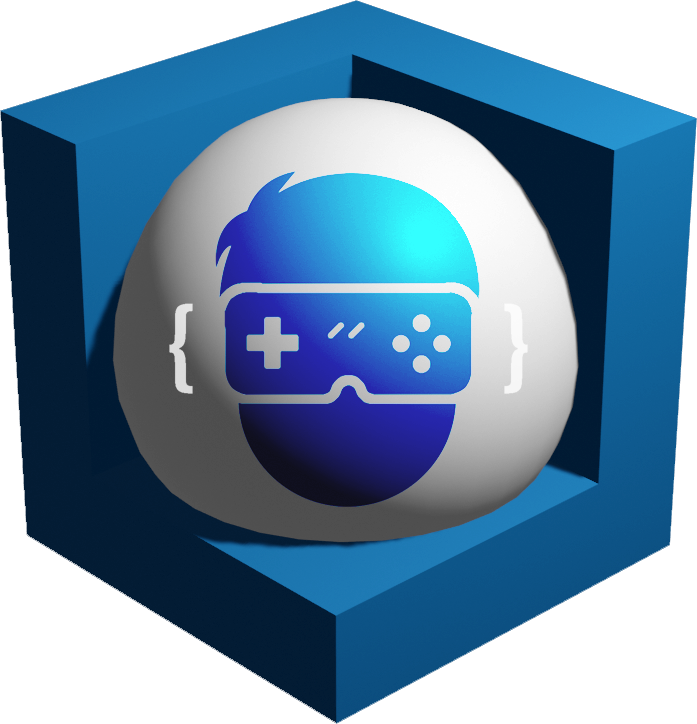
Mata kuliah S2 Topik Dalam Pengembangan Game, Realitas Virtual, dan Realitas Augmentasi mengajak Anda mengeksplorasi dunia imersif. Dalam kuliah ini, Anda akan mempelajari implementasi lingkungan imersif pada platform Realitas X, termasuk realitas virtual, realitas berimbuh, dan realitas campuran. Topik yang akan dijelajahi mencakup komputasi, interaksi, dan evolusi teknologi pendukung seperti tampilan visual, pelacak gerakan, grafika 3D interaktif, sensor multimodal, audio spasial, antarmuka pengguna, IoT, desain pengalaman, teknik pengembangan gim, dan mekanika gim. Mahasiswa diharapkan mampu melakukan riset pada ranah gim dan realitas X, memodelkan objek dalam lingkungan virtual, memprogram interaksi antara pengguna dan objek virtual, serta mengembangkan solusi inovatif untuk masalah dunia nyata melalui realitas virtual dan augmentasi.
This master's degree course “Topics in Game Development, Virtual Reality, and Augmented Reality” invites you to explore the immersive world. In this course, you will learn about implementing immersive environments on the Realitas X platform, including virtual reality, augmented reality, and mixed reality. The topics covered include computation, interaction, and the evolution of supporting technologies such as visual displays, motion trackers, interactive 3D graphics, multimodal sensors, spatial audio, user interfaces, IoT, experience design, game development techniques, and game mechanics. Students are expected to conduct research in the field of games and extended reality, model objects in virtual environments, program interactions between users and virtual objects, and develop extended reality using game engines to solve real-world problems. 🌟🎮🌐

Mata kuliah ini mencakup pembahasan riset yang dibutuhkan untuk implementasi lingkungan imersif pada platform Realitas X, yakni realitas virtual, realitas berimbuh, dan realitas campuran, berikut mekanika gim ke dalamnya. Pembahasan akan memadukan topik-topik komputasi dan interaksi termasuk evolusi beberapa teknologi pendukung seperti tampilan visual, pelacak gerakan, grafika 3D interaktif, integrasi sensor multimodal, audio spasial, antarmuka pengguna, IoT, gim, desain pengalaman, teknik pengembangan gim, dan mekanika gim. Melalui kuliah ini, mahasiswa diharapkan mampu melakukan riset pada ranah gim dan realitas x, memodelkan objek dalam lingkungan virtual, memrogram interaksi antara pengguna dan objek virtual, dan mengembangkan realitas x menggunakan mesin gim untuk menyelesaikan masalah di dunia nyata.
This course covers the design and technical discussions required for implementing immersive environments on the Extended Reality (XR) platform, namely virtual reality (VR), augmented reality (AR), and mixed reality (MR), also including game mechanics into it. The discussion will combine computing and interaction topics, including the evolution of several supporting technologies such as visual displays, motion tracking, interactive 3D graphics, multimodal sensor integration, spatial audio, user interfaces, IoT, games, experience design, game dev technique, and game mechanics. Through this course, students are expected to be able to do research in games and extended reality, model objects in a virtual environment, program interactions between users and virtual objects, and develop extended reality using a game engine to solve real-world problems.
In this course students will learn about various text data processing techniques to retrieve information. Students are expected to be able to design, analyze and apply information retrieval methods to real problems with a multidisciplinary approach either independently or as teamwork.
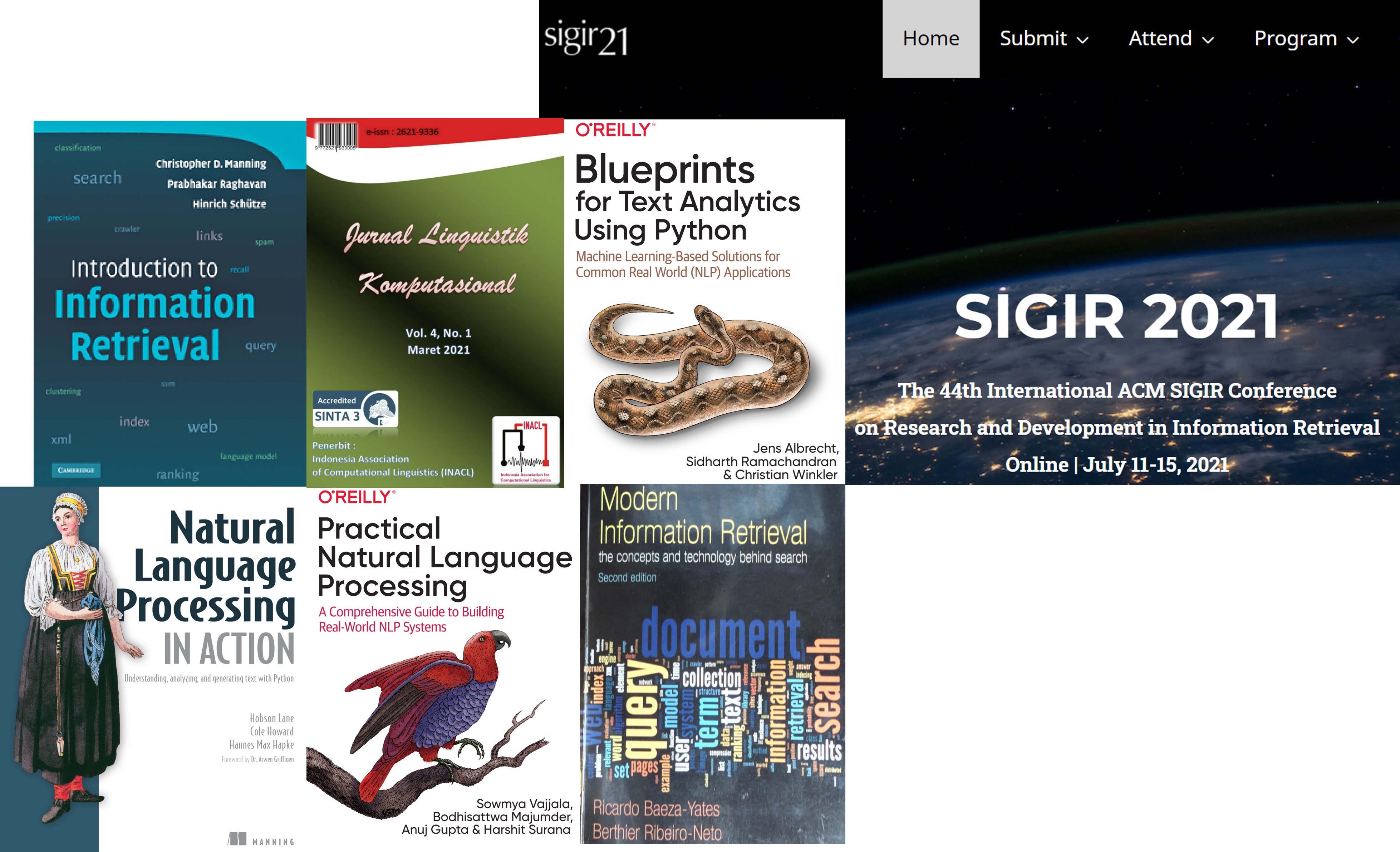
| BAHAN KAJIAN | 1 | Pengertian, sejarah dan kaitan Toponimi dengan ilmu pengetahuan yang lain; | ||||||
| 2 | Hubungan Toponimi dengan mata kuliah di Teknik Geomatika; | |||||||
| 3 | State of the art Toponimi di tingkat nasional dan internasional dan peran dan fungsi Toponimi dalam pembangunan nasional; | |||||||
| 4 | Toponimi : Alam, Toponimi Gunung, Toponomi Maritim, Administrasi (Pemerintahan : propinsi, kabupaten, kota dsb, Kawasan situs purbakala); | |||||||
| 5 | Peranan Lembaga Internasional : Kelembagaan, Tujuan dan fungsi; | |||||||
| 6 | Nama Rupabumi : Dasar Hukum, Otoritas Nasional Nama Rupabumi/Rupabumi, Ruang Lingkup Kegiatan Penamaan Unsur Rupabumi, Standardisasi Nama Geografis Maritim, Nomenklatur Nama Geografis dari Unsur Bawah-Laut; | |||||||
| 7 | Ruang Lingkup Kegiatan Penamaan Unsur Rupabumi, Gazetir Nama Unsur Rupabumi Nasional dan Prosedur tentang pemberian nama, perubahan nama dan penghapusan. | |||||||
| CPL PROGRAM STUDI YANG DIBEBANKAN KE MATA KULIAH | B | Mampu merancang kegiatan survei dan pemetaan dengan menggunakan teknologi terkini dalam bidang geodesi, surveying, hidrografi, penginderaan jauh, fotogrametri, dan kadaster. | ||||||
| F | Mampu menyusun laporan ilmiah dan memberikan solusi berdasarkan kepemimpinan, kreativitas dan keterampilan komunikasi serta bertanggung jawab atas pekerjaan yang dilakukan. | |||||||
| H | Mampu bekerja dalam tim lintas disiplin dan lintas budaya sehingga dapat bersaing di tingkat nasional maupun internasional. | |||||||
| CP MATA KULIAH | 1 | Memiliki pengetahuan tentang Pengertian, sejarah dan kaitan Toponimi dengan ilmu pengetahuan yang lain; penamaan dan pembakuan nama rupa bumi (toponimi) | ||||||
| 2 | Memiliki pengetahuan tentang Hubungan Toponimi dengan mata kuliah di Teknik Geomatika; dasar teori dan metode-metode survei dalam penamaan dan pembakuan nama rupa bumi (toponimi) | |||||||
| 3 | Memahami State of the art Toponimi di tingkat nasional dan internasional dan peran dan fungsi Toponimi dalam pembangunan nasional; memiliki pengalaman untuk melakukan pengamatan di lapangan terkait dengan penamaan dan pembakuan nama rupa bumi (toponimi) | |||||||
| 4 | Mampu menjelaskan tentang Toponimi : Alam, Toponimi Gunung, Toponomi Maritim, Administrasi (Pemerintahan : propinsi, kabupaten, kota dsb, Kawasan situs purbakala); dan bagaimana proses penamaan dan pembakuan nama rupa bumi (toponimi) | |||||||
| 5 | Maampu memahami Peranan Lembaga Internasional : Kelembagaan, Tujuan dan fungsi; mengungkapkan ide atau gagasan mereka secara lisan dan tertulis. | |||||||
| 6 | Mampu memahami Nama Rupabumi : Dasar Hukum, Otoritas Nasional Nama Rupabumi/Rupabumi, Ruang Lingkup Kegiatan Penamaan Unsur Rupabumi, Standardisasi Nama Geografis Maritim, Nomenklatur Nama Geografis dari Unsur Bawah-Laut; dan menerapkan konsep dan prosedur ilmu dan teknik Toponimi sebagai salah satu metode dalam informasi geospasial baik bekerja secara mandiri maupun kerjasama tim. | |||||||

MK Tugas Akhir ini, khusus untuk proses pembimbingan mahasiswa yang mengambil Tugas Akhir dengan Dosen Pembimbing: bu Aulia SA

This course is about urban morphology. It is hard to find shared definitions, by different morphological approaches, of ‘urban morphology’ and ‘urban form’. The course draws on the basic definition that urban morphology means the study of urban forms, and the agents and processes responsible for their transformation and that urban form refers to the main physical elements that structure and shape cities—streets (and squares), street blocks, plots, and common and singular buildings, to name the most important. The theme of the different elements of urban form will be developed in detail later in the course. In this course, the word ‘city’ is used in its wider sense, encompassing most human settlements.
Mata kuliah User Experience Design (UX Design) merupakan mata kuliah yang fokus pada perancangan pengalaman pengguna dalam interaksi dengan produk atau layanan digital. Dalam mata kuliah ini, mahasiswa akan mempelajari konsep-konsep penting dalam merancang antarmuka yang intuitif dan menarik, serta bagaimana mengoptimalkan perjalanan pengguna agar mencapai tujuan dengan lancar. Materi yang diajarkan meliputi analisis kebutuhan pengguna, pengembangan prototipe, tes pengguna, dan prinsip-prinsip desain yang berfokus pada kepuasan dan kenyamanan pengguna. Mahasiswa juga akan terlibat dalam proyek-proyek praktis untuk mengaplikasikan konsep-konsep yang dipelajari dalam situasi nyata. Mata kuliah ini memiliki peran penting dalam mempersiapkan mahasiswa untuk menjadi desainer yang mampu menciptakan pengalaman digital yang unggul dan memuaskan bagi para pengguna.
User Experience Design (UX Design) course is a subject that focuses on designing user experiences in interactions with digital products or services. In this course, students will learn important concepts in designing intuitive and appealing interfaces, as well as how to optimize user journeys for smooth goal achievement. The topics taught include user needs analysis, prototyping, user testing, and design principles that emphasize user satisfaction and comfort. Students will also be engaged in practical projects to apply the learned concepts in real-life situations. This course plays a significant role in preparing students to become designers capable of creating excellent and satisfying digital experiences for users.
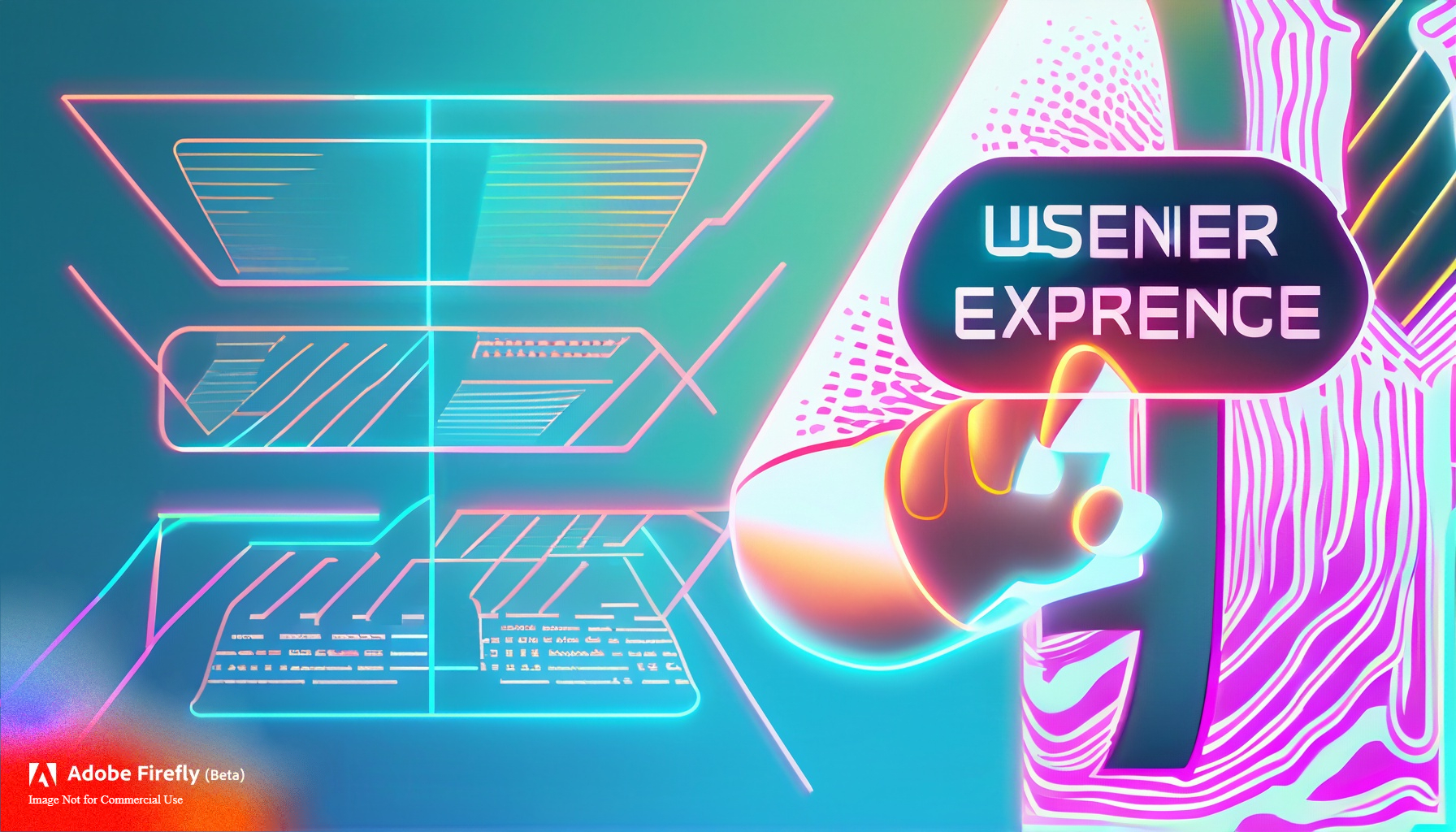
Mata kuliah User Experience Design (UX Design) merupakan mata kuliah yang fokus pada perancangan pengalaman pengguna dalam interaksi dengan produk atau layanan digital. Dalam mata kuliah ini, mahasiswa akan mempelajari konsep-konsep penting dalam merancang antarmuka yang intuitif dan menarik, serta bagaimana mengoptimalkan perjalanan pengguna agar mencapai tujuan dengan lancar. Materi yang diajarkan meliputi analisis kebutuhan pengguna, pengembangan prototipe, tes pengguna, dan prinsip-prinsip desain yang berfokus pada kepuasan dan kenyamanan pengguna. Mahasiswa juga akan terlibat dalam proyek-proyek praktis untuk mengaplikasikan konsep-konsep yang dipelajari dalam situasi nyata. Mata kuliah ini memiliki peran penting dalam mempersiapkan mahasiswa untuk menjadi desainer yang mampu menciptakan pengalaman digital yang unggul dan memuaskan bagi para pengguna.
User Experience Design (UX Design) course is a subject that focuses on designing user experiences in interactions with digital products or services. In this course, students will learn important concepts in designing intuitive and appealing interfaces, as well as how to optimize user journeys for smooth goal achievement. The topics taught include user needs analysis, prototyping, user testing, and design principles that emphasize user satisfaction and comfort. Students will also be engaged in practical projects to apply the learned concepts in real-life situations. This course plays a significant role in preparing students to become designers capable of creating excellent and satisfying digital experiences for users.

Aim
To impart the knowledge and skills in formulating linear and non-linear models as well as in applying efficient solution techniques and rigorous mathematical analysis to the problems of operations research field in pursuit of feasible and optimal decision making.